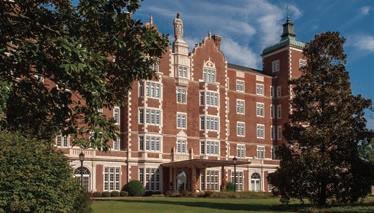





























Pillow Talk
Cool Spring evenings call for a luxuriously appointed bed.

From sumptuous, quill-free feather to elegant, synthetic down, your perfect pillow awaits.

































Cool Spring evenings call for a luxuriously appointed bed.

From sumptuous, quill-free feather to elegant, synthetic down, your perfect pillow awaits.


Save

MAGAZINE
Volume 19, No. 3
David Woronoff, Publisher david@thepilot.com
Andie Stuart Rose, Creative Director andiesouthernpines@gmail.com


Jim Moriarty, Editor jjmpinestraw@gmail.com
Miranda Glyder, Graphic Designer miranda@pinestrawmag.com
Alyssa Kennedy, Digital Art Director alyssamagazines@gmail.com
Emilee Phillips, Digital Content emilee@pinestrawmag.com
CONTRIBUTING EDITORS
Jim Dodson, Deborah Salomon
CONTRIBUTING PHOTOGRAPHERS
John Gessner, Laura L. Gingerich, Tim Sayer
CONTRIBUTORS
Jenna Biter, Keith Borshak, Tom Bryant, Susan Campbell, Bill Case, Mallory Cash, Wiley Cash, Tony Cross, Brianna Rolfe Cunningham, Mart Dickerson, Bill Fields, Meridith Martens, Mary Novitsky, Lee Pace, Todd Pusser, Joyce Reehling, Scott Sheffield, Rose Shewey, Stephen E. Smith, Angie Tally, Kimberly Daniels Taws, Daniel Wallace, Ashley Walshe, Claudia Watson, Amberly Glitz Weber

ADVERTISING SALES
Ginny Trigg, Advertising Director 910.693.2481 • ginny@thepilot.com
Samantha Cunningham, 910.693.2505
Kathy Desmond, 910.693.2515
Jessica Galloway, 910. 693.2498
Terry Hartsell, 910.693.2513
Erika Leap, 910.693.2514
ADVERTISING GRAPHIC DESIGN
Mechelle Butler, Scott Yancey
ADVERTISING COORDINATOR
Rebah Dolbow • pilotads@thepilot.com


PS
Henry Hogan, Finance Director
910.693.2497
Darlene Stark, Circulation Director 910.693.2488
SUBSCRIPTIONS
910.693.2488
OWNERS
Jack Andrews, Frank Daniels III, Lee Dirks, David Woronoff
In memoriam Frank Daniels Jr.
145 W. Pennsylvania Avenue, Southern Pines, NC 28387 www.pinestrawmag.com ©Copyright


Moore County’s Most Trusted Real Estate Team!



CARTHAGE• $439,000
522 ABBEY ROAD
Gorgeous, 3 BR / 3 BA home in the Fox Grove Community offers an open and inviting floorplan with lots of nice features!

GOLF FRONT
JACKSON SPRINGS • $499,900
32 WOODLAND CIRCLE
New golf front construction of a 4 BR / 3 BA home in desirable Foxfire Village East. Situated on a corner lot off the 11th tee of the Foxfire Resort and Country Club West Course.



JACKSON SPRINGS • $489,000
6 DICKINSON COURT
New Construction underway of a 4 BR / 2.5 BA home in desirable golfing community of Foxfire Village East.
SEVEN LAKES WEST • $69,000
113 BANBRIDGE DRIVE
Remarkable opportunity to own a triple golf front lot in sought-after 7LW community.
SEVEN LAKES WEST • $37,500
158 SWARINGEN DRIVE
This sloping corner lot on the water is only for access to the 1,000- acre spring fed Lake Auman with its marina, beach and boat docks in the gated community of Seven Lakes West. Seller is also selling adjoining lot, 169 James Drive.
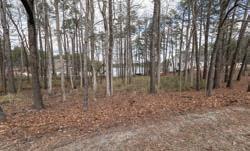

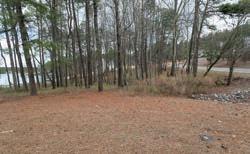
SEVEN LAKES WEST •$37,500
169 JAMES DRIVE
This sloping corner lot on the water is only for access to the 1,000- acre spring fed Lake Auman with its marina, beach, and boat docks in the gated community of Seven Lakes West.
PINEHURST • $475,000
44 HAMPSHIRE LANE
Wonderfully built, 3 BR / 2.5 BA home filled with newly construct amenities. Closely located to the Village of Pinehurst.


SEVEN LAKES NORTH • $42,000
TBD FIRETREE LANE
Large lot nicely situated in 7LN location.
PINEHURST • $419,000
330 SUGAR PINE DRIVE
Nice, 3 BR / 2 BA brick home situated on a corner lot in the popular Lake Pinehurst area surrounded by mature landscaping. It offers a bright, open floor plan.
PINEHURST • $545,000
285 MERION CIRCLE
Beautiful, 4 BR / 3.5 BA home in nice Pinehurst location. Home offers a nice spacious layout with lots of space upstairs and down.


SEVEN LAKES WEST • $1,090,000
105 BANCROFT
Spectacular 4 BR / 4.5 BA home situated on a beautifully landscaped lot off the fourth green of the Beacon Ridge CC golf course.


SEVEN LAKES WEST • $795,000
133 SHAW DRIVE
Charming, 3 BR / 2.5 BA waterfront home in desirable Seven Lakes West offers a light, open floorplan with fantastic views of Lake Auman across the back!
PINEHURST • $298,000
TBD GRAHAM ROAD
Great corner lot in historic Old Town Pinehurst! It is just a few blocks from the heart of Village of Pinehurst with its quaint shops, pubs, and restaurants.

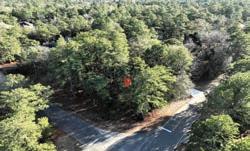
PINEHURST • $275,000
45 BECKETT RIDGE

Great, golf front lot in desirable and amenity rich, Fairwoods on 7!



PINEHURST •$785,000

24 GREYABBEY DRIVE
Gorgeous, 4 BR / 4BA brick home nestled on a beautifully landscaped corner cul-de-sac lot in the desirable, gated Pinewild community.
Impeccable, 4 BR / 3.5 BA waterfront home with an open design and amazing view from nearly every room in the house! Transferrable PCC Membership!
Browse Inventory, Get Pre-Approved, or Complete Paperwork

CURBSIDE PICK-UP & DELIVERY AVAILABLE FOR YOUR NEW CAR!
Check out our Advantage Plan that is guaranteed with every purchase.



At Pinehurst Toyota, we’re more than just a dealership. We’re a family. Every time you step onto our lot, our goal is to make sure you are 100% satisfied with your visit, whether you’re looking to purchase a new ride, secure financing for that vehicle, have your current auto serviced, or buy genuine Toyota parts. You can count on our staff to make you the number-one priority. Interested in joining the family?

LIFETIME LIMITED POWERTRAIN WARRANTY
YEARS NO COST MAINTENANCE*

Thanks to your support, we have won: Best of The Pines 2021 for the #1 Dealership Service Department. Schedule your appointment today to experience #1 Service



COMPLIMENTARY LOANERS
5 YEARS ROADSIDE ASSISTANCE*
OUR BEST PRICE DIFFERENCE**
100% CUSTOMER SATISFACTION GUARANTEE***


Looking back, I may have seen this poetic syllogism scrawled on an ancient stone wall several years ago while hiking with my wife in Tuscany (where every graffiti artist is a philosopher-intraining). Or maybe I heard Oprah Winfrey say it in one of her SuperSoul Conversations that the aforementioned wife suggested that I listen to on long drives.
Whoever said it, I’m grateful for its pithy wisdom because I’ve suddenly reached an age where I know it to be true.
Back in February, I turned 70, a milestone that took me by surprise.
It’s not that I was unprepared. In truth, I’ve enjoyed getting older and slowing down a bit, giving me the chance to notice the evening sky.
Also, I am not alone in this epic journey into the great gray age and the unknown, as my late father — who lived a full and active life right up to a week before he died at 80 — used to joke. According to the U.S. Census Bureau, there are 69.2 million baby boomers alive and kicking today in America, the second-largest population group next to our children, the millennials (73.9 million born between 1981 and 1996 ). My particular group was born in 1953 ands falls somewhere in the lower middle of the boomer years between 1946 and 1964.
According to the latest actuarial projections used by our friends at the Social Security Administration to calculate how much longer the agency will have to give us back all the money we spent decades putting into the system, my age and gender group — males
aged 70 — can expect to live another 14.5 years, while our female counterparts come in at a 16.75. Good for them, I say! Sell the house, dump the stocks, give away the dog and go sit on a beautiful beach in Tahiti for the rest of your days! By the way, that’s exactly what my wise but cheeky and younger wife Wendy says she plans to do with her giddy 10 extra years after I check out of the Hotel California.

Meanwhile, according to the CDC’s Center for Health Statistics (NCHS), life expectancy at birth in the United States declined nearly a full year from 2020 to 2021, a worrying dip from 77.0 to 76.1 years that is the lowest level since 1996, probably due in part to a thing called COVID. The 0.9 year drop in life expectancy in 2021, along with a 1.8 year drop in 2020, was the biggest two-year decline since 1921–1923, years in which the Spanish flu wiped out millions worldwide, including my own maternal grandmother.
Actuarially speaking, it could be worse, of course. Afghanistan’s current life expectancy is just a hair over 56 years, considerably shorter if the Taliban’s Morality Police catch you whispering about the need to educate girls and women.
Singapore’s life expectancy, on the other hand, is a bonny 86.5 years. Perhaps this means that Dame Wendy — the future merry widow — should consider moving there instead of Tahiti (which has a mere life expectancy of 78.82 years) where she’s likely to make lots of older gal pals living the good life off the insurance money on a lovely Asian beach. As any veteran foreign traveler knows, however, Singaporeans are obsessed with public cleanliness and strict social order. Littering, chewing gum in public or failing to flush a public toilet can land you a whopping $1,000 fine, while showing your bare feet or skin of any sort can earn you three months in jail. That sensational black one-piece my 61-year-old lover debuted at the pool last summer probably won’t fly with Singapore’s own Morality Po-
Someone once said to me that it’s not happiness that makes one grateful, but gratitude that makes one happy.
lice. So on second thought, perhaps I won’t suggest Singapore and just leave well enough alone. That’s probably the wisest thing I’ve learned from being happily married for 20-plus years.
The point of all these dizzying numbers, as Oprah or any Tuscan street poet with spray paint can tell you, is to live the best life you can and be damned grateful for whatever time you have left.
That’s exactly what my fellow members of the Stuffed Potatoes Lunch & Philosophy Club try to do on a daily basis.
For the moment, there’s just three of us in the club. We meet every other week or so in the shadowy booth of a popular restaurant to discuss the current state of the world, the wonders of our grown children and the enduring mystery of our wives.
Remarkably, as this March dawns, all three of us will have turned 70 by the end of the month. Joe hit the mark in late January, I did so in early February, and Patrick achieves the milestone later this month.
I’m told none of us actually looks 70 years old, though wives, golf pals and fellow Stuffed Potatoes can scarcely be considered objective sources.
For that matter, we probably don’t even act like old men, save for when we complain about dodgy knees and idiots who run red lights. As a kid, I once asked my lively grandmother on her 84th birthday if she was afraid of dying. She grinned and patted my rosy little cheek. “Not a bit, sugar pie,” she said. “Just afraid of falling.”
None of the Stuffed Potatoes, I can reliably report, are afraid of dying. We’re too busy for that.
January Joe is a professional forester helping set aside beautiful lands for future generations. Patrick, the marketing whiz — I fondly call him the “Irish Antichrist” — is keeping the national economy afloat. And I’m just a humble scribbler trying to finish three books this year alone.
Given that we collectively amount to 210 years of accumulated life experience, I put to my fellow Stuffed Potatoes a timely question the other day: What is the one thing you’ve learned in 70 years?
January Joe, our resident sage, didn’t hesitate. “There are wonders ahead. Don’t fight them — just surrender!” This from a lovely fellow who gets to walk in the woods for a living and surrenders most weekends to the joy of several beautiful grandbabies.
My old friend, Patrick, offered with a hearty laugh, “There’s no good news or bad news. It’s all information. Just keep doing what you do and don’t look back.” The Irish Antichrist means business.
As for me, I hope to finish half a dozen more books over the 15.5 years I may or may not have left. Only time will tell.
In the meantime, we have a joyous new puppy named Winnie and a garden that is springing gloriously back to life by the minute.
I’m deeply grateful for both, not to mention a fabulous wife who says she really has no interest in going to Singapore or Tahiti. And was probably only joking.
That makes me a really happy guy.. PS Jim
“DUNROSS” is an extraordinary estate built in 1929 by legendary golf course architect, Donald J Ross. Reminiscent of a Scottish manor, the present owners christened the property “DUNROSS” and proceeded to lovingly initiate a $1M restoration returning DUNROSS to its original glory. Exceptional grounds with outdoor kitchen and entertaining area. Over 2 acres. Carriage house and additional 3 bay garage Offered
Over two-acre private estate just minutes from the Historic Village of Pinehurst and Pinehurst Resort & Country Club. Absolutely breathtaking grounds on private POND, stunningly beautiful. All brick, well loved, sprawling home with much to offer an active family. Casual elegance throughout, with multiple fireplaces, vintage wine room, and so much more. $1,895,000
Once in a lifetime opportunity to live on the world renowned Pinehurst No 2 Golf Course, site of the 1999, 2005, 2014 and soon to be 2024 U.S.Open. Stately, all brick, custom home built along the 7th and 8th fairways of Pinehurst No 2. Large deck overlooking golf course with total privacy. Large open rooms with three ensuite bedrooms, plus handsome office. Deep molding throughout. $1,895,000


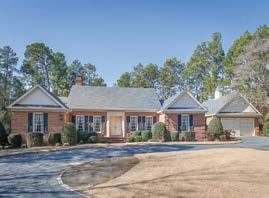
170 EAGLE POINT LANE

MID SOUTH CLUB

Executive home on Arnold Palmer designed Golf Course with over 7000 square feet of living space.Gorgeous home, amazing detail throughout, 4 ensuite bdrms, wine room, home theatre, workshop, fitness room and more. Private, Golf front LOT. Puppy personal shower. High-end construction with “Superior Walls. $1,585,000

1
ROAD FAIRWOODS ON 7
A coveted address in the gated Community of Fairwoods on 7. Surrounded by wildlife, pond, golf green, golf views and yes, PRIVACY! The waterfront and golf views are available in most every room of the home, plus large, screened porch, and patios for morning coffee or evening cocktails. First floor living area reconstructed in 2012. 48 KW Generator $1,495,000

68
STUNNING & MOVE-IN-READY! Situated inside the Gated Community of Pinehurst National on the 17th Green of the Jack Nicklaus designed Pinehurst No 9. Open floor plan with over 3700 heated square footage. A fabulous, enclosed porch with outdoor kitchen and cozy TV area, has a retractable screened wall overlooking the Green, extending the outdoor living space. Immediate Signature membership 1-9. $810,000

The Country Bookshop and the Weymouth Center for the Arts & Humanities present Marjorie Hudson in conversation with Katrina Denza about Hudson’s debut novel, Indigo Field, on Wednesday, March 22, at 5:30 p.m. at the Weymouth Center for the Arts & Humanities, 555 E. Connecticut Ave., Southern Pines. For information and tickets go to www.ticketmesandhills.com.


Since 1986, the Moore County Writers’ Competition has promoted and honored superior writing throughout our communities. Join the awards ceremony where certificates and cash prizes will be presented for poetry, fiction and nonfiction submitted by writers in five different age groups. Winners will read a selection of their entries from 2 p.m. to 4 p.m. on Sunday, March 12, at the Weymouth Center for the Arts & Humanities, 555 E. Connecticut Ave., Southern Pines. For information go to www.weymouthcenter.org. Admission is free but registration is required.
The Tony Award winning star of HBO’s The Gilded Age, Kelli O’Hara, will appear live at BPAC’s Owens Auditorium, 3395 Airport Road, Pinehurst, on Saturday, March 18, at 7 p.m. Among her many stage, film and television credits, O’Hara received a Tony Award for Best Leading Actress in a Musical in 2015 for her portrayal of Anna Leonowens in The King and I, and an Emmy nomination for her portrayal of Katie Bonner in the hit web series The Accidental Wolf. For tickets and information go to www.ticketmesandhills.com.

Richard Wagner’s masterpiece Lohengrin returns to the Metropolitan Opera — and the screen at the Sunrise Theater, 250 N.W. Broad St., Southern Pines — on Saturday, March 18, at 12 p.m. Famed Polish tenor Piotr Beczala stars as the mysterious swan knight. The Bridal Chorus may ring a bell. For information call (910) 692-3611 or go to www.sunrisetheater.com.

The Sandhills Repertory Theatre will present An Evening with Oscar and Steve: The Music and Lyrics of Oscar Hammerstein and Stephen Sondheim at the Sunrise Theater, 250 N.W. Broad St., Southern Pines, on Thursday, March 30, at 7 p.m. and again on Sunday April 2, at 3 p.m. For tickets and information got to www.sunrisetheater.com.

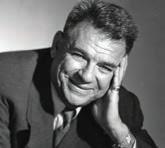
Recommended for children from kindergarten to second grade, the heart-warming story A Sick Day for Amos McGee will be performed Saturday, March 4, from 5 p.m. to 6 p.m. at BPAC’s Owens Auditorium, 3395 Airport Road, Pinehurst. Zookeeper Amos McGee knows friends can come in all sizes and species, too. Amos runs races with the tortoise, cares for a particularly shy penguin, and reads stories to an owl. One day, Amos is too sick to visit his zoo friends, but, fortunately, the animals know just what to do. For information and tickets go to www.ticketmesandhills.com.

The Sandhills Repertory Theatre presents Judy, Joni and Joan: The Music of Judy Collins, Joni Mitchell and Joan Baez at the Sunrise Theater on March 18 at 7 p.m. and again in two shows on March 19 at 3 p.m. and 7 p.m. Three outstanding New York-based female musicians — Elizabeth Nestlerode, Samantha Sayah and Jane Bruce — will have you singing along in this tribute to three extraordinary friends and artists whose music transcends the generations. Tickets can be purchased at the Sunrise box office by calling (910) 692-3611 or online at either www.sunrisetheater.com or www.sandhillsrep.org.

The Garden Club of the Sandhills ushers in springtime by hosting the 2023 edition of “Blooming Art” at the Campbell House Gallery, 482 E. Connecticut Ave., Southern Pines, on Saturday, April 1, from 10 a.m. to 5 p.m., and again on Sunday, April 2, from 1 p.m. to 4 p.m. The “Blooming Art” exhibit pairs local art with interpretive floral arrangements. Among the professional floral designers participating this year are Carol Dowd, Matt Hollyfield, Leslie Habets, Crystal Blue, Ellen Burke, Jeremy Bowden, Bill McPhail and Cynthia Ballantyne. Members of the Southern Pines, Olmsted, Pinehurst and Linden Garden Clubs, in addition to the Weymouth Dirt Gardeners and the Garden Club of the Sandhills, will also be represented. Advance tickets are $15 and are available at www.ticketmesandhills.com. Funds raised by “Blooming Art” support scholarships for students in the horticultural program at Sandhills Community College, projects by the Sandhills Horticulture Gardens, and horticultural programs for children.

The Carolina Philharmonic will host its 8th annual Maestro’s Cup at Pinewild Country Club, 85 Glasgow Drive, Pinehurst on Sunday, March 12. All proceeds benefit music education programs in the community. For information call (910) 687-0287 or go to www.carolinaphil.org. Then, on Monday, March 20, you can re-tee in The Kelly Cup Golf Championship at Forest Creek Golf Club, 200 Meyer Farm Drive, Pinehurst. Win a car for a hole-in-one on the designated par-3. All proceeds benefit the Sandhills Children’s Center. For information call (910) 692-3323 or go to www.sandhillschildrenscenter.org.


CoolSweats in the Village of Pinehurst
910.295.3905
105 Cherokee Rd. Pinehurst, NC

(February 19 – March 20)
Einstein was a Pisces. While it’s true the German physicist struggled to remember his own birthday — “It is a known fact that I was born, and that is all that is necessary,” he would say — he had that Piscean knack for thinking outside the box. Imagination is your superpower. Keep that in mind this month when Mars dips into your fourth house of home and family, and tries yanking up the rug. Tension, like time, is relative.
Aries (March 21 – April 19)
The fast lane is overrated.
Taurus (April 20 – May 20)
You can’t pull a rabbit from an empty hat.
Gemini (May 21 – June 20)
Best to leave yesterday behind you.
Cancer (June 21 – July 22)
Follow the breadcrumbs.
Leo (July 23 – August 22)
Try screaming into a pillow.
Virgo (August 23 – September 22)
As you were. Or consider flying a kite.
Libra (September 23 – October 22)
It’s time to speak your piece.
Scorpio (October 23 – November 21)
Be sure to read the fine print.

Sagittarius (November 22 – December 21)
You’re smothering it again.
Capricorn (December 22 – January 19)
Wear your power color.
Aquarius (January 20 – February 18)
There’s a fine line between boundaries and dissociation. PS
Zora Stellanova has been divining with tea leaves since Game of Thrones’ Starbucks cup mishap of 2019. While she’s not exactly a medium, she’s far from average. She lives in the N.C. foothills with her Sphynx cat, Lyla.
$1,950,000
7 bed • 5 bath
Julia Lattarulo (910) 690-9716
Jennifer Nguyen (910) 585-2099
Nestled in the Village of Pinehurst, The Cottage Colony School House is steps away from shops & the Pinehurst Resort and

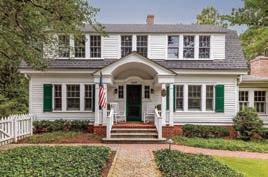

$1,500,000
3 bed • 4 bath
Marie O’Brien (910) 528-5669


MLS 100367298
This home is located in the premier golf course and gated community of Pinewild CC! It offers views of the fairways and greens and has a koi and goldfish pond. The private gardens feature panoramic views!
$1,235,000
4 bed • 5 bath
Debbie Darby (910) 783-5193
MLS 100360852
Get whisked away to another time upon entering this charming country estate! It has high ceilings and features details of Heart Pine and oak and brick flooring. It has an inground saltwater pool with outdoor spaces.

$595,000
4 bed • 3/1 bath
Donna Ryals (619) 925-1201








MLS 100364346
This is a well-maintained home featuring an updated kitchen, a main floor owner’s suite, plus loft and bonus space upstairs! You’ll also find walk-in storage in this 3,125+ sq. ft. home. You can find this beautiful listing in a gated golf community.
$400,000
Linda Criswell (910) 783-7374
MLS 100363829
Find this rare offering of a golf-front lot located in Fairwoods on 7, a premier course of Pinehurst Country Club! This lot is at the end of Firestone Drive and features a gentle slope from front to back.
$299,000
Linda Criswell (910) 783-7374
MLS 100363034

This is the largest and most private lot in Forest Creek with over 4 acres of land! The actual building parcel is over 1.3 acres and is located on Meyer Farm Drive. If you desire privacy and flexibility, this is the lot for you!

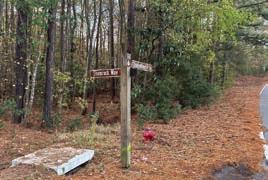
$219,000
Bess Giles (910) 639-5006
MLS 100358699
This is a beautiful double lot with a partial view of Lake Pinehurst! Lots 150 & 165 are sold togethercombining these two lots provides a generous building envelope. A PCC Charter membership is available to the buyer.
 22 Deacon Palmer Place, Southern Pines
Lot 150 Diamondhead Drive, Pinehurst
Lot 271 Hearthstone Road, Pinehurst
231 Meyer Farm Drive 911R, Pinehurst
1290 E Indiana Avenue, Southern Pines
89 Abbottsford Drive, Pinehurst
205 Cherokee Road, Pinehurst
22 Deacon Palmer Place, Southern Pines
Lot 150 Diamondhead Drive, Pinehurst
Lot 271 Hearthstone Road, Pinehurst
231 Meyer Farm Drive 911R, Pinehurst
1290 E Indiana Avenue, Southern Pines
89 Abbottsford Drive, Pinehurst
205 Cherokee Road, Pinehurst
 By Stephen e . Smith
By Stephen e . Smith
If you read the promo material for Daniel Wallace’s new memoir, This Isn’t Going to End Well: The True Story of a Man I Thought I Knew, you’ll assume the message is straightforward: Hero worship is an exercise in disillusion. But the “hero” in Wallace’s memoir isn’t a hero in the accepted sense (the sociological definition for “significant other” is a more accurate term); and the message, although essential and timely, is predictably ambiguous.
Wallace is the author of the bestselling novel, Big Fish, and six other much-praised works of fiction, and the qualities evident in his earlier works are perfectly transferable to his first foray into nonfiction. He crafts a compelling narrative that pulls the reader headlong into a story whose energy never wanes. He’s thoughtful and thought-provoking. He makes sense of the past in order to free the reader to face the future, and he writes with courage and candor.
Wallace introduces his hero, his future brother-in-law, William Nealy, in a scene where he happens upon Nealy attempting a perilous leap from the rooftop of the family home into a swimming pool 25 feet below. Nealy takes flight, plunges into the water, climbs out and repeats the jump over and over. “It was pretty magnificent,” Wallace writes. “It wasn’t some unformed idea I had about masculinity or manliness in him that I was drawn to; I wasn’t into that, then or now. It was just the wildness, the derring-do, his willingness to take flight — literally — into the unknown, an openness to experience and chance that so far in my short life had not been previously modeled to me by anyone.” Wallace admits that he didn’t need to emulate Nealy’s behavior but that he learned “. . . how to become the me I wanted,” and that he would think of that day — he was 12 at the time — as the moment he was born again.
The first third of Wallace’s memoir is a biography of Nealy’s short life: his need for constant adrenalin highs, his success as a cartoonist and writer, his marriage to Wallace’s sister, their loving but troubled relationship, and how Nealy’s example encouraged Wallace to become something other than a cliché — not a writer, but someone “demonstrably unique, amusing,” someone living on the fringes.
Following Nealy’s example Wallace threw himself into several
unsatisfying pursuits, eventually settling on the writing of fiction — the telling of quirky tales in which nothing is as it seems — that led to the success of Big Fish.
The Nealys settled near Chapel Hill, where they purchased a large tract of wooded land and William built a house, wrote books and produced cartoons and maps about the challenges of outdoor life. In the context of contemporary existence — the use of drugs and alcohol notwithstanding — it all seemed idyllic, skewed perfection in a humdrum world that was constantly encroaching. But that encroachment became all-consuming when a close mutual friend, Edgar Hitchcock, a drug dealer whom Wallace characterizes as “the kindest man I have ever met, so smart, funny and loving,” a dealer who confesses that “selling drugs is the final frontier,” is murdered.
The second part of the memoir centers on the mystery surrounding Hitchcock’s death. Nealy became obsessed with finding the man who murdered his friend, and the road led almost immediately to a likely suspect. Relying on simple intuition, Nealy was able to identify the culprit when he first shook his hand. “It was a notion that would be lodged into the marrow of his very being and would not be dislodged, not ever, not for as long as he lived.”
For purposes of the memoir, the suspect’s name is Stanley, a personable enough acquaintance whom Nealy “befriended” in an attempt to discover the truth surrounding Hitchcock’s murder. When Hitchcock’s body was discovered five months after his disappearance, Stanley began to subtly reveal his culpability.
It’s a long and tangled tale that leads to Stanley’s indictment and his eventual release because of convoluted legal circumstances that hindered prosecution. Nealy was powerless to avenge his friend’s murder, and his continuing obsession with the unpunished culprit damaged his marriage to Wallace’s sister. For one of the few times in his adult life, Nealy found himself powerless to influence events. His need to control the uncontrollable becomes apparent in a brief journal entry: “My whole life has been a struggle against the world to preserve my ‘being’ and it’s put me in dire conflict with the people I love . . . I MUST NOT LET THEM SEE WHO I REALLY AM!”
Nealy committed suicide in his early 40s, Wallace’s sister died

in 2011, and Wallace inherited their ashes and Nealy’s journals, leaving him to piece together the events that led to his friend’s tragic end. The journal entries aren’t particularly revealing, but one laconic passage exposes the source of Nealy’s recklessness. Nealy’s hero, a Scoutmaster, sexually assaulted him while at summer camp. Nothing more is revealed about the encounter — and what more needs to be said? A physical dissociation from oneself is the inevitable outcome of such a traumatic event and might explain Nealy’s reckless behavior.
Wallace is left to manage his grief and grapple with the psychological pain suffered when the person upon whom he modeled his life proved himself fallible. He eventually comes to what he believes is a satisfactory understanding of William Nealy’s life and death, but that solution isn’t simple or straightforward. There are no easy answers — and the conundrum remains: What becomes of us when our significant other stumbles? “Can we ever know why we are who we are,” he writes, “the recipe that makes us the unique, bewildering, beautiful and sometimes insane creatures we end up becoming?”
Wallace doesn’t shy from the final truth: There are many ways to die — murder, suicide, illness — and he’s philosophical about the state in which we find ourselves: “. . . there appear to be no safe places left in the world, on our streets or in our hearts.” How true are those simple words?
This Isn’t Going to End Well is not an easy or uplifting read, but it is a memoir borne of intense experience and introspection, which is the only available panacea for what troubles us. Suicide is a perilous subject for the writer and the reader, but Wallace acknowledges that contemplating the taking of one’s life is the most damaging secret a person can have. The “Author’s Note” lists The National Suicide Prevention Lifeline number. PS
Stephen E. Smith is a retired professor and the author of seven books of poetry and prose. He’s the recipient of the Poetry Northwest Young Poet’s Prize, the Zoe Kincaid Brockman Prize for poetry and four North Carolina Press Awards.
A Welcome Place
Arts & Humanities Series: Lumbee Life, Lore & Legacy (2 of 3) March 19 • 2 pm
“Part 2 :Performance & Symbolism in Regalia & Dance,” featuring speaker Kaya Littleturtle; Series continues April 23 with “Part 3: Herbal Remedies of the Lumbee Indians” featuring speaker Arvis Boughman. $15 Members/$20 Non-Members
Sponsored by Sandhills Community College, UNC Pembroke, and Penick Village.
March 12 • 2 pm
Recognizing the great writers within our community Free Admission / Registration Required Sponsored by the Donald and Elizabeth Cooke Foundation.
Writers-inResidence Reading
March 22 • 5:30pm
Majorie Hudson reads from her debut novel, Indigo Field Free Admission / Registration Required


presented in partnership with UNCP April 2 • 11:30 - 2 pm
Part 1 in our Spring Jazz Series. Barber’s bebop style is rooted in the swagger and soul of the blues and swing traditions. Series continues April 30 with Kate McGarry and Keith Ganz Ensemble. Bring chairs and a picnic and enjoy live jazz outside on our beautiful grounds. Cash bar with mimosas, beer, wine, and non-alcoholic beverages available. Individual Concerts: Members/Non-Members Tickets: $25/$35 - Kids 12 and Under are Free; VIP Tables Available Series Subscribers: $40 Members/$60 Non-Members
Our 2022-23 series is generously sponsored by the North Carolina Arts Council “Spark the Arts” program, Penick Village, and FirstHealth Concierge Medicine.


Thank you to our sponsors: Cindy & Robert Candler, Richard J. Reynolds III and Marie M. Reynolds Foundation; Gerald Claude Kirby Trust; North Carolina Arts Council; Arts Council of Moore County; The Palmer Foundation; Penick Village; Marion Stedman Covington Foundation; The Cannon Foundation; Donald and Elizabeth Cooke Foundation; The Pilot 555 E. Connecticut Ave., Southern Pines, NC
A 501 (c)(3) organization
A balanced diet + a balanced life
National Nutrition Month® is extra incentive to make better eating choices. Food is only one facet of your unique weight-loss journey, though. The Metabolic & Weight Management Center can help make holistic weight management a natural part of your life through:
Surgical or non-surgical treatment options
Full-service nutrition and wellness education with a registered dietitian

Diagnosis of weight-influencing diseases and factors
Lifestyle modifications based upon behavior
Long-term follow-ups and support groups
Our providers are ready to partner with you on your long-term health and wellness.

Sallie Kincaid is the daughter of the biggest man in a small town, the charismatic Duke Kincaid. Born at the turn of the 20th century into a life of comfort and privilege, Sallie remembers little about her mother, who died in a violent argument with the Duke. By the time she’s 8 years old, the Duke has remarried and had a son, Eddie. While Sallie is her father’s daughter, sharpwitted and resourceful, Eddie is his mother’s son, timid and cerebral. When Sallie tries to teach young Eddie to be more like their father, her daredevil coaching leads to an accident, and Sallie is cast out. Nine years later, she returns, determined to reclaim her place in the family. Sallie confronts the secrets and scandals that hide in the shadows of the Big House, navigates the factions in the family and town, and finally comes into her own as a bold, sometimes reckless bootlegger.

The only child of an iconic American novelist discovers a shocking tangle of family secrets, upending everything she thought she knew about her parents, her gilded childhood and her own stalled writing career in this standout debut novel. Growing up in the ’90s in New York City as the only child of famous parents was both a blessing and a curse for Isabelle Manning. Her beautiful society hostess mother, Claire, and New York Times bestselling author father, Ward, were the city’s intelIt couple. Ward’s glamorous obligations often took him away from Isabelle, but Claire made sure her childhood was filled with magic and love. Now an adult, all Isabelle wants is to be a successful writer like her father. After many false starts and the unexpected death of her mother, she faces her upcoming 35th
birthday alone and on the verge of a breakdown. Her anxiety skyrockets when she uncovers some shocking truths about her parents and begins wondering if everything she knew about her family was all based on an elaborate lie.

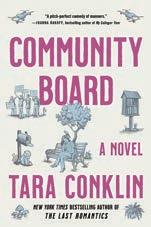
Where does one go, you might ask, when the world falls apart? When the immutable facts of your life — the mundane, the trivial, the take-for-granted minutiae that once filled every second of every day — suddenly disappear? Where does one go in such dire and unexpected circumstances? Home, of course. Darcy Clipper, prodigal daughter, nearly 30, has returned home to Murbridge, Massachusetts, after her life takes an unwelcome left turn. Murbridge, Darcy is convinced, will welcome her home and provide a safe space in which she can nurse her wounds and harbor grudges, both real and imagined. But Murbridge, like so much else Darcy thought to be fixed and immutable, has changed. And while Darcy’s first instinct might be to hole herself up in her childhood bedroom, subsisting on Chef Boyardee and canned chickpeas, it is human nature to do two things: seek out meaningful human connection and respond to anonymous internet postings. As Murbridge begins to take shape around Darcy, both online and in person, she asks herself: What can she expect of her community? And what does she owe it in return?
In this stunning debut novel from the Northern Irish poet, The Gospel of Orla is the coming-of-age story of a young girl, Orla, and the man she meets who has an astonishing and unique ability. It is also a road novel that takes us across the north of England after the two flee Orla’s village together, and the mysteries of faith charge full bore into the vagaries of contemporary mores.

The Three Little Guinea Pigs, by Erica Perl

Oh, my, cuteness overload! This charming retelling of the classic tale will have every guinea pig lover squeaking for joy at the three piggies’ clever antics. The fun facts at the end really amp up the “awwww” factor. (Ages 3-8.)
When Sea Becomes Sky, by Gillian McDunn

When you live near a salt marsh, a boat, no matter how tiny, is a ticket to freedom. For Bex, her rowboat is where she feels closest to her brother, Davey, and where she begins to see how art and life and personal passion intersect. When Sea Becomes Sky is destined to join the canon of summer must-reads. (Ages 9-12.)
Heroes of Havensong : Dragonboy, by Megan Reyes

This debut novel follows four children — a boy turned dragon; his reluctant dragon rider; a runaway witch; and a young soldier — bound together by the fates themselves to save their world, and magic itself, from being destroyed. Perfect for Wings of Fire fans looking for a new series. (Ages 9-12.)
Outdoor School: Tree, Wildflower, and Mushroom Spotting, by Mary Kay Carson

How do you know if that weed growing in your backyard actually is common liverwort? Does stinging nettle really sting? How do you recognize poison ivy? Find out all this and more in the newest edition of outdoor school. (Ages 8-13.) PS
Compiled by Kimberly Daniels Taws and Angie Tally.


Untold Power

Wednesday, March 15 at 7pm FREE Online Event
Registration is required on ticketmesandhills.com
Reading with poets
Pat Riviere-Seel and Paul Jones
Wednesday, March 26 at 2pm At The Country Bookshop
Registration at Ticket me sandhills
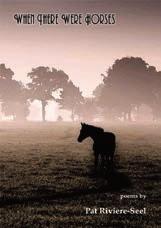
Trigiani

Good Left Undone
Wednesday,
The Astronaut’s Guide To Leaving The Planet: Everything You Need to Know, from Training to Re-entry Thursday, April 20th at 5pm EVENT FOR KIDS AND ADULTS

Registration is required on ticketmesandhills.com
The Golden Doves Book Club Luncheon with special guest speaker Sherry Virtz from Penguin Random House

Thursday, April 27th at 5pm Tickets available on ticketmesandhills.com
Henry
The Secret Book of Flora Lea

Saturday, May 15th at 1pm At The Country Bookshop Free Registration is required on ticketmesandhills.com

WhenI made late plans to travel south by car in January, I did something without hesitation for the first time. More than 35 years since the maiden drive I took along the Eastern Seaboard, I knew I was going to break up the 600-mile trip with an overnight stay going and coming. Thanks to a reservoir of hotel points, I booked a room north of Richmond on the way down and north of Baltimore on the way back — segments of roughly 400 and 200 miles in each direction.
It wasn’t a proud moment because it was an acknowledgement of the personal rather than automotive odometer, of the miles traveled since making a right turn on May Street in my Ford Escort in the fall of 1986, handwritten directions to New York City on the passenger seat. I’m sure I’ll make it in one shot again but also believe that Ashland, Virginia, and Middle River, Maryland, haven’t seen the last of me. (The tasty green curry at a Thai place a short walk from the hotel in the latter location will be a draw.)
I’ve made the drive dozens of times since that first journey north, once or twice a year, in the wake of celebration or sadness, for work and pleasure, alone and with a significant other. The early trips seem medieval. My tiny hatchback didn’t have air conditioning, and there had to be cash in the car for tolls. On the chaotic, traffic-choked approach to the George Washington Bridge during the summer heat, those two factors combined to make things fairly hellish — either sweat like a pig as you inched through the narrowing funnel of cars toward the toll-taker, or be cooler and breathe the fumes along the way.
Despite the predictable jams on Interstate 95, I’ve seldom chosen the longer, calmer, more scenic Interstate 81-U.S. Route 220 path. Perhaps I’m a glutton for punishment, but the longer, indirect, more inland trip has never been my preference. Being so groggy that I had to pull over for a few minutes near Asheboro
on the home stretch once when I traveled that way might have influenced my thinking.
Going the usual way without an overnight stop, the drive from Connecticut (first Stamford, and for a long time, Fairfield) to Southern Pines or vice versa ranges from 11 to 13 hours: the fastest (9 hours, 15 minutes) and slowest (19 1/2 hours), each beginning at my customary 4 a.m. start time. I recall the first happening with extraordinarily light traffic, only a couple of quick stops and my having an unusual lead foot. The second was a nightmarish wintertime journey heading north, black ice on bridges forcing a lengthy pause before even getting into Virginia. The weather cleared until we reached southern New Jersey, where it began snowing heavily. With no hotel vacancies, we poked along in the near blizzard, stopping only to clear the ice-encrusted wipers, making it home well after midnight, as road weary as I’ve ever been.
I’ve had SiriusXM in my car the last few years, a luxury that helps the time pass on the long rides. Satellite radio and the ability to make hands-free calls are a far cry from the old days, when it took a surgeon’s touch on the dial to get an uncooperative distant station, and it felt like a win when songs outmuscled the static for a while. I fondly remember long-ago trips when I tuned in to C-SPAN Radio around Washington, D.C., for an entertaining two hours of Lyndon Johnson White House telephone recordings. (The Texan was at his earthy best in a conversation with Mr. Haggar about his needs on some custom-tailored slacks.)
On the second, shorter leg of my most recent trip south, I settled for Morning Edition on a couple of public radio stations as I drove through Virginia and North Carolina. Heading closer to the Sandhills, I was struck by how much new stuff was alongside U.S. Highway 1 near Sanford —MIRO Country Hams long gone now — north of Southern Pines, whose growth is now evident in all directions. As I exited onto Midland Road and presently pulled into Pine Needles Lodge & Golf Club eager to walk 18 holes on a sunny and mild afternoon, I could feel my older, middle-age. PS
 By Wiley Ca Sh
p hotographS By m allory Ca Sh
By Wiley Ca Sh
p hotographS By m allory Ca Sh
The first time I met Charles Frazier was in Asheville back in the spring of 2016. Along with several other authors, we had been invited to participate in a fundraiser at the Asheville Community Theater. I knew most of the authors there that evening, but I didn’t know Charles, and I was nervous about meeting him. Like most people in the world, I had read Cold Mountain after it won the National Book Award in 1997, and then I saw the Oscar-winning film, which starred Nicole Kidman, Jude Law and Renée Zellweger, when it was released in 2003. I’d read the two novels he’d published in the intervening years. My love for them only contributed to my nervousness at the idea of meeting their author.
But apparently Charles Frazier wasn’t one bit nervous about meeting me. He walked right up to me backstage and said, “I was up in Hot Springs a few months ago, and I saw that you were scheduled to do an event in town. I left a note for you at the public library. Did you get it?”
Reader, I was too shocked that Charles Frazier even knew who I was to be shocked by his reliance on paper technology. Needless to say, we’ve been friends ever since. He joined me onstage a year later for an in-conversation event for the launch of my novel, The Last Ballad, and I did the same for him when his novel, Varina, was released in 2018. We’ll be back onstage together on April 10 on the campus of UNC Asheville for the launch of his latest novel, The Trackers, a book that will both please and surprise fans of Charles Frazier.
There’s an old saying that serious writers never write the same book twice, and Charles never has, but he has almost always written about the same places, which is to say Appalachia and the Southern United States. The surprise that’s in store for readers is that The Trackers, which is set in Depression-era America, ranges
far afield from the swamps of Florida to the big skies of Wyoming to the sooty factory towns and transient camps of the Great Northwest. But readers who loved Charles’ previous novels will find echoes of those works in his new one. Like Cold Mountain, The Trackers is the story of a man on a quest. WPA mural painter Val Welch is in pursuit of Eve Long, the wife of a wealthy rancher who has absconded with a priceless piece of artwork, and like Thirteen Moons (2006), the new novel is awash in era-appropriate research, from automobiles to art and architecture to the politics of the New Deal. Like Nightwoods (2011), The Trackers expertly employs noir tropes like tight, scene-driven dialogue and dark, ominous settings, and like the titular character in Varina (2018), Eve Long is a dashing, magnetic heroine: a former runaway turned traveling honky-tonk singer who finds herself married to a wealthy political hopeful before pulling the plug on it all and disappearing without a trace. Her husband, who is sponsoring Val’s mural project in a
local post office, makes Val a financial offer he can’t refuse: track Eve and find out where she is, why she left, and, most importantly, who she really is.
According to Charles, it was nearly 10 years ago when the idea for the novel that became The Trackers first came to mind.
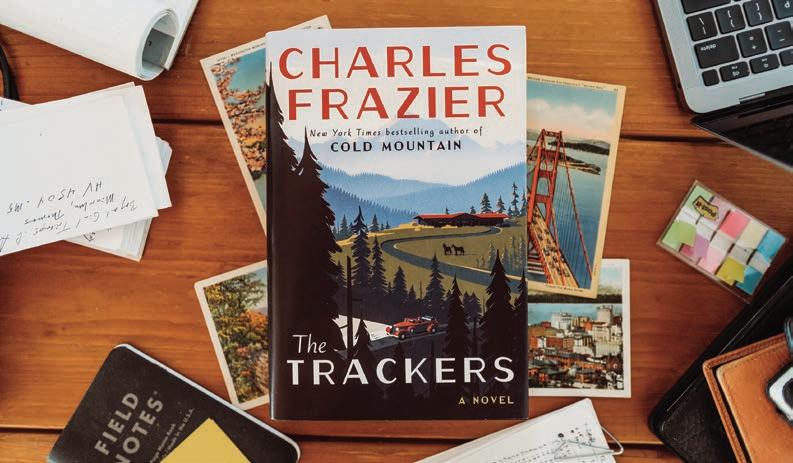
“We were up in Boone, and I was just killing time,” he says. “I visited the post office, which has one of those Depression-era WPA murals. After that I had more time to kill, so I went to the library at Appalachian and looked up information about WPA projects, specifically the Treasury Department art projects. One of the first images I saw was a photograph taken inside one of those small post offices, and there was a mural in progress on the wall with two young guys working on it. Standing on the floor looking up at them was an older guy and a woman. They were both well-dressed, and I thought, OK, there’s a story here.”
As the story rattled around in his mind over the following months and years, Charles dispatched with one of the two mural artists and focused on a single artist and how he might interact with the well-heeled couple who were watching him work. Artist Val Welch and rancher Jake Long and his mysterious wife Eve were born.
Charles and I are standing in the midcentury modern house he and his wife, Katherine, own in Asheville, a home that’s not quite ready for them to inhabit. Like many people in post-pandemic America, they’re waiting on the right contractor to come along to
update the house and make it fully habitable. For now, Charles has set up a writing desk in the light-filled living room, a stone fireplace against one wall and tall windows opening to the yard, where, despite it being mid-January, the view is alive with greenery.
I think about Inman, Ada and Ruby, the three characters who drove the narrative in Cold Mountain, and ask Charles if there’s something that spoke to him about using a similar triangulation of characters in The Trackers
“Well, that’s one of the things that appealed to me while writing this book. I could keep a handle on the relatively limited number of characters because I have a problem sometimes with expansion,” he says. “Having that very clear arrangement of characters helped me keep it under control and forced me to focus on trying to keep the book short. But, in The Trackers, Eve is the reason the triangle exists. I never lost sight of her as the main character.”
Eve is no doubt the main character. Even when she’s not on the page, her presence drives the action and tension. And even though this book is relatively short in comparison to some of his longer novels, many of the scenes feel expansive because Charles allows them to breathe and exist as the reader witnesses them in what feels like real time. One scene that comes to mind unfolds over a long night in the swamps of Florida when Val encounters Eve’s former in-laws, a dangerous band of lawless folks who are as suspicious of Val’s
outsider status as they are of his questions about their former daughter-in-law’s whereabouts.
“That was a really fun scene to write,” Charles says. “It was fun to get that rhythm, that really slow, heavy rhythm to the dialogue and pacing. This is the point in the novel when Val is beginning to learn that he is truly in over his head.”
There were points in writing The Trackers when Charles began to fear that he was in over his head too, especially when the pandemic struck and he could not make use of the location scouting that had benefited all of his previous novels and brought the realities of place and landscape to the page. But he had an ace or two up his sleeve when writing about the West and about Florida: He and Katherine spent the bulk of the 1980s living in Colorado with their young daughter, and after Cold Mountain was released, they resided full time on a horse farm in central Florida. Of course the process of writing The Trackers was full of research, but when you read the novel and encounter far-flung Western states, the boggy swamps of Florida and people who understand horses intimately, you are encountering worlds that Charles Frazier knows well.
If you read the novel, you might also be reminded of a literary genre Charles also knows well: the travel narrative, which his novels certainly borrow from, especially Cold Mountain and Varina. But it is his lesser known first book, Adventuring in the Andes, a travel guide published by the Sierra Club, that most reflects his love for the genre.
During the long years of writing The Trackers, especially during the COVID lockdown, travel was on Charles’ mind, and he was itching to get out West and look around, but he found himself settling for photographs, music and art that was resonant of the West in the 1930s, especially Woody Guthrie and Diego Rivera. But writing a novel as complex and rich as The Trackers is hard, and it takes a long time, despite how many books you’ve published before or how many millions of copies they’ve sold.
“It doesn’t get any easier,” Charles says. “At least it hasn’t gotten any easier for me. And I’m just an enormously disorganized writer. Every time I finish a novel I’m a little bit surprised.”
From a weekend away with the girls, to a fun vacation with the family, or a romantic getaway, we have packages that are perfect for any occasion.

Our Rendezvous Package is ideal for any stay, greeted with wine upon your arrival, dinner in our award-winning restaurant, and breakfast in bed.
blockade-runner.com Don’t

As if to give insight to the expanse of hours spent at his desk, he shows me the tiny slips of paper he uses to record his word counts along with the dates of his daily writing sessions. When I look at his handwriting I can’t help but be reminded of the note he left for me in Hot Springs years earlier, and I wonder how Val Welch would go about tracking it down.
Well, I’m no tracker. So, to the people of Hot Springs, North Carolina, if you find a little slip of paper that contains a message that Charles Frazier wrote to Wiley Cash years and years ago, do me a favor, hang onto it until I’m back in town. PS
Wiley Cash is the Alumni Author-in-Residence at the University of North Carolina at Asheville. His new novel, When Ghosts Come Home, is available wherever books are sold.



on the periphery of pop culture, you will likely miss a number of trends, hypes and hashtags. I am fine with the general concept of it. In fact, I am quite comfortable in my state of pop-apathy, unruffled by much of the noise and excitement of mainstream culture. However, it also means I occasionally miss out on something of value. In terms of food, I wish I had paid attention about five years ago when poke bowls rose to fame and conquered the mainland.
Not only was I snoozing on this tasty development but, without giving it much thought, I assumed that poke bowls were of Japanese origin. In my defense, as a native to Central Europe, far removed from any island living, what was I to think of a dish served with sushi rice, raw fish, chopsticks and pickled ginger? (Unsurprisingly, the mainland rendition of poke differs significantly from authentic island poke, but I’ll get to that in a minute). If you, like myself, were off by about 4,000 miles and didn’t know poke is a traditional Hawaiian dish, you’re in good company. I have since learned that, unless you are
greeted at the door by aloha signs and grass skirt-wearing waiters, not many people seem to know (or care) where poke comes from as long as it tastes good. And I can get on board with this.
A purist at heart, I’m torn when it comes to straying from tradition; talk about (con)fusion cooking. If the heart of the matter is preserved — which is highly subjective, of course — I’m generally in favor of mixing things up, but please make it an homage to the original, or call it something else. Original Hawaiian poke’s roots go back to when the first Polynesians came to the island. Supposedly, Captain James Cook was served poke during a visit to Hawaii in the late 18th century. Poke literally means “to slice, cut crosswise into pieces.” What is typically served as a simple snack on the island morphed into a wholesome meal on the continent.
To honor tradition as well as to indulge in the playful bowl-culture of our time, making octopus “tako” poke gets you the best of both worlds, without too much of a compromise. Unless you drown your poke in spicy mayo, then you cannot be helped. Octopus, alongside tuna, is one of the classically used poke ingredients; you can do as the islanders do and eat it raw, without sides, or serve it hipsterville-style on a bed of rice with seaweed and avocado. Either way is scrumptious and definitely picture-worthy.
12-16 ounces baby octopus, cooked
3 cups sushi rice, cooked
1 medium-size tomato, diced
3 tablespoons shoyu (can substitute soy sauce or tamari)
1 tablespoon sesame oil
1 teaspoon grated ginger
1/2 teaspoon crushed red pepper flakes
1/4 cup chopped green onions
1 tablespoon rice vinegar
1 teaspoon honey
Additional optional toppings: sliced avocado, cucumbers and radishes, sprouts, toasted sesame seeds, julienned carrots, roe, pickled ginger, seaweed flakes or salad.
Cut octopus into bite-sized pieces. In a small bowl, combine ingredients for the relish and mix well. Add octopus, stir once more to combine, cover and chill before serving. To serve, add sushi rice to a bowl, top with tako (octopus) poke and add additional ingredients of your choice. PS
German native Rose Shewey is a food stylist and food photographer. To see more of her work visit her website, suessholz.com.
If you are

If you ask any of my friends or family about their knowledge of vermouth, their answers would more than likely fall into three categories.
The first group enjoys vermouth: They make their own cocktails at home on a weekly basis; they more than likely have their favorites when it comes to the subject of fortified wine; their vermouth is refrigerated and not spoiled.
The second group kind of knows about vermouth, and they might have a bottle of sweet vermouth in their kitchen, but it’s been collecting dust on their little liquor shelf ever since the pandemic lockdown when, on a whim, they wanted to make a Manhattan because they saw it on Mad Men.
In the third group — and this includes someone I personally know — when asked what they know about vermouth, they respond with a terrible French accent and talk like Inspector Clouseau.
Here are a few suggestions to elevate your game from bad firstperiod French to kick-ass martini. Just remember, once opened, these bottles must stay in your fridge, where they can last a couple of months. As the inspector would say, “Until we meet again and the case is sol-ved.”
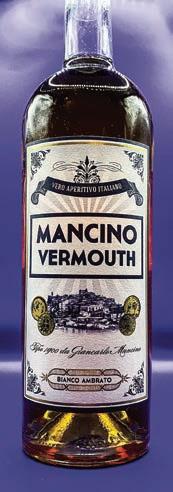
This Italian vermouth has gained a lot of popularity in the past decade, and for good reason. I’ve had a few of their different styles and they’re all delicious — on their own and in cocktails. For those who are completely unfamiliar with vermouth, pour this over a
glass of ice with an orange wedge and try to pick out what lands on your tastebuds. There are 37 aromatic herbs infused in this soft and dry Trebbiano di Romagna wine, including elderflower, chamomile, mint and orange.
Drink: Pour 3 1/2 ounces over ice in a rocks glass. Garnish with orange wedge. You may also add 1/2 to 1 ounce in your gin and tonic.
This is one of my favorite sweet vermouths for making cocktails. It’s super approachable to drink with huge notes of orange and vanilla. It’s fantastic in a Manhattan, and it’s great on its own over crushed ice with an orange wedge. Grab a bottle and give it a try — just remember to put it in the fridge. If you love it as much as I do in a Manhattan, try the recipe I found in The Infused Cocktail Handbook, by Kurt Maitland.
Drink: Poughkeepsie (courtesy of Laura Bellucci and Belle Epoque)
2 ounces Angel’s Envy Bourbon
1 ounce chamomile-infused Carpano Antica
2 dashes Bitterman’s Boston Bittahs (that’s Boston for “bitters”) Build ingredients in a mixing vessel, add ice, and stir until cocktail is cold and diluted properly. Strain over ice in an oldfashioned glass.
1 liter Carpano Antica Formula Vermouth
2 tablespoons loose-leaf chamomile tea
Place ingredients in a large mason jar and let the mixture steep


at room temperature for 48 hours. Strain before using or storing in the fridge. For best results, use within two weeks. Please note that Carpano also makes smaller bottles (375 milliliters); it might be a good idea to start small. Just adjust the amount of chamomile tea to 1 tablespoon, instead of 2.
This is also one of my favorite vermouths, known for its clean, light, floral style. The Dolin Blanc — a style of bianco, like the Mancino above — is clear and has a touch of sweetness. It goes well with a variety of spirits, such as pisco, gin, blanco tequila and vodka. Infusing chamomile with this bianco makes a great spring drink! Not to be confused with the crisp and classic “dry” that Dolin produces (my favorite in a gin martini), the Dolin Blanc is more fun to play around with using fruits and herbal infusions. Strawberries with this vermouth in a highball cocktail with blanco tequila and sparkling water is easy sipping. I found the following recipe for banana-infused Dolin Blanc in the back of Death & Company’s newest book, Welcome Home. I’ll leave the rest of the drink to your creativity, but white rum is a good place to start.
Drink: Banana-Infused Dolin Blanc Vermouth
200 grams peeled, ripe (but not brown) banana
1 375 milliliter bottle Dolin Blanc vermouth (reserve the bottle)
Thinly slice the bananas. Combine them with the vermouth in a bowl. Cover and refrigerate for 12 hours. Strain through a paper coffee filter, Superbag or fine-mesh sieve lined with several layers of cheesecloth, then funnel back into the vermouth bottle and refrigerate until ready to use, up to three months. PS






knew pods only from the English peas growing in Granddaddy’s garden .
and tent-like enclosures E.T. might take camping.
In mankind’s insatiable quest for the new, the shiny, he-she-they occasionally turn up a relic that, when dusted off, can be recycled, then touted as le denier cri. I speak of podcasts which, in generations before Gens. X-Y-Z, were called radio: Sit down in front the wireless, the transistor, the boom box, and listen to people talking, music playing, ad jingles, news and weather, whatever.
Relax. Close your eyes. You could be listening to The Fat Man or The Jack Benny Show. More recently, on road trips, I enjoyed NPR’s Car Talk, international news, and a show where listeners challenged a chef to contrive a recipe from unlikely ingredients.
I understand why Gens. X-Y-Z prefer podcasts. Podcasts are chic, informative, entertaining. But thinking they invented the talkie genre, no way.
As for the name, Google informed me that it attaches iPod — the delivery hardware for the original product — to broadcast, an ancient verb turned noun. Though still confused, I stand better informed.
My first podcast experience was on TV. At the end of HBO’s mini-series The Gilded Age the audience is invited to stay tuned for a podcast exploring the show. What followed was a conversation between writers and producers. On the screen remained a still of the opulent set. Like when the picture freezes. My brain, accustomed to multi-stimulants, tuned out.
Better Google a definition before proceeding: “A digital medium consisting of an episodic series of audio, video, PDF subscribed to and downloaded through Web syndication or streamed online to a computer or mobile device.”
Discouraged but still intrigued, I booked an in-person conversation with Frank Daniels IV, The Pilot’s radio/podcast-meister who was still a teenager when podcasts came into being, circa 2004. His tutorial filled me with shock and awe, as would a neurosurgeon explaining how to cut open a brain. He explained platforms,
monetizing a famous or ordinary name, how 60 percent of Americans have listened to at least one podcast, creating your own, accessing subject matter, even libel vs. slander dispensed by hothead podcasters like the infamous Joe Rogan. He spoke on lack of filtration (censorship), when and where people listen (forget the bathtub), the appeal for children who can don headphones and run around or fall asleep while listening to Grandma read a story. Really, Daniels knows more about podcasting than I know about chicken soup. Always smiling, he convinced me podcasts were the modern-day World Book Encyclopedia
Like baking bread and knitting, podcasts grew in popularity with better-educated housebound techies during the pandemic. Only disappointment: no loaf, no sweater.
Daniels concedes that the medium has gone in too many directions. Millions exist, some super-interesting and educational, others mere ego trips. “But it won’t burn out; podcasting is here to stay,” he says.
Not sure I am, however, despite Daniels’ patient and enthusiastic tutorial. Obviously, podcasting makes him happy while just making me anxious, same as artificial intelligence and deep-fake videos. Have you heard about the new program that writes an essay or report from inputted facts? There goes my job. Besides, not sure my Android cell is au courant, or compatible. No Sirius or laptop, either, just a rickety old PC, a non-smart TV and an AMFM radio. Can’t grasp RSS feeds. Too much up and downloading. Too many choices, like looking for a good beach read at the Library of Congress. Besides, ear buds render me slightly dizzy.
So I’ll stick with my little portable radio, a go-to during power outages. NPR survives storms and, even Daniels concurs, nothing lifts the spirits like classic rock. Should that pale, I’ll dig up old-time podcasts of 20 Questions, The Jack Benny Show and Breakfast with Dorothy and Dick, the must-hear news and gossip hour consumed 1945-63.
At least until E.T. invites me for a weekend camping. PS
Until recently, I
. .Deborah Salomon is a contributing writer for PineStraw and The Pilot . She may be reached at debsalomon@nc.rr.com.









It is almost that time again for our feathered friends: nesting season. Pairs of birds will team up to bring forth the next generation. In some cases, they will even repeat the process once or twice before the days shorten and temperatures begin to drop.
As with so many behaviors, reproduction is triggered by hormonal changes, which are the result of changes in day length. Females will become responsive to the advances of males as daylight increases. And before long, the hunt for a spot to nest will begin. Interestingly, the strategies vary among the bird species we find in central North Carolina.
The investment in nest building for some species is minimal. Killdeer, for instance, only create a slight scrape in a sandy or pebbly surface. They are ground nesting birds whose splotched eggs blend in perfectly with the substrate. Furthermore, killdeer young are precocial, meaning that they are mobile as soon as they hatch and will instantly begin following their parents. There is no nestling phase, so protection of the young birds is unnecessary.
In the Sandhills it is not unusual for mourning doves to nest at ground level in a layer of grasses or small twigs. Even when doves nest in small trees or shrubs, their nest platform is minimal. It is amazing that the eggs or young do not fall through the nest. Then again, this species is known to raise young in virtually any month of the year, so losing an egg or youngster through the cracks is not problematic in the long run.
Cup nests are a very common strategy for nesting — especially among songbirds. Northern cardinals, blue jays, American robins all form a typical nest from small branches, twigs and grasses. Such
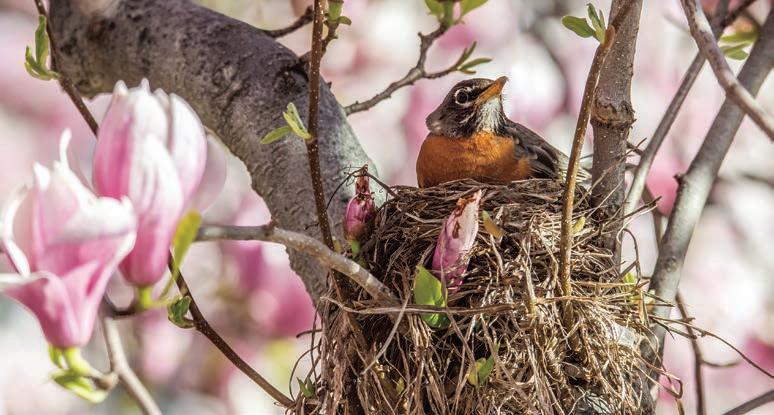
nests can be visible through the leaves and are not infrequently depredated. As a result, some species, such as blue-gray gnatcatchers and ruby-throated hummingbirds, have evolved to use camouflage in the form of mosses or lichens on the outside of the cup so that the nest is not obvious to predators on a bare limb.
Hawks and eagles have taken nestbuilding to the next level and may create an enormous, cupped platform for their young. These huge stick nests, placed high in a live tree or snag, typically are enlarged with more material every year. They can be very noticeable given their bulk. However, given the size and ferocity of these birds, the strategy is not problematic. Furthermore, one of the adults typically guards the nest until the young are close to fledging.
And then there are the species that use holes: the cavity nesters. Woodpeckers and nuthatches can carve out a cavity in dead wood using their powerful bills with little trouble. Species such as chickadees, titmice, bluebirds or wood ducks will move right into these spaces when the architects move on. It is these birds that many of us have been giving a helping hand by erecting bird boxes. Box design varies by species, of course, given the different reproductive requirements of different birds. The height, the depth of the box and, most importantly, the size of the entrance hole will determine who will move in.
So, if you have not yet done so, this is the time to be cleaning out and repairing nest boxes for the breeding season. Old nests should be removed, and the boxes should be aired out for a day or two. It would not hurt to give them a rinse with the hose as well — but do NOT use cleaning products. And then stand back: It will not be long before your first feathered tenants will be moving in! PS








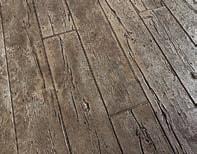


Spring’s
is when
brings
~Edgar Guest
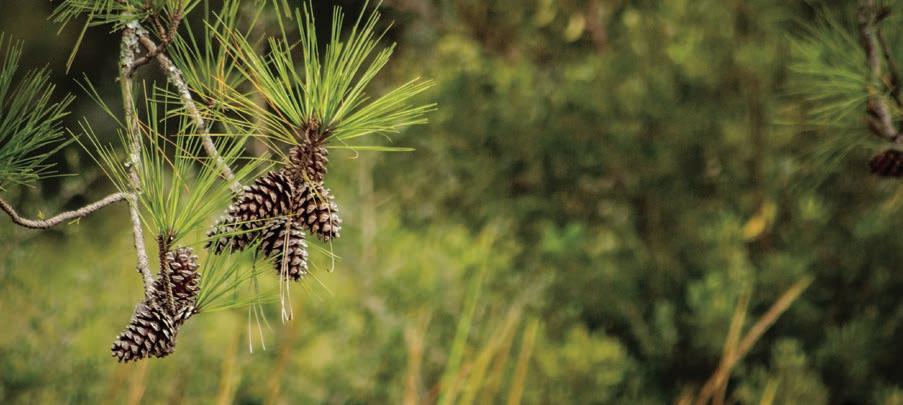
“So what a man has got to do is take a little time off as he grows older, and devote the waste space to remembering the things he did that he maybe won’t never do again.”
— Robert Ruark, The Old Man and The BoyIt was one of those after the New Year, late winter, hoping for spring kind of days when the frosty wind was out of the northwest, blowing hard enough to keep most everyone, animals included, close to home. I had a pretty good case of cabin fever, so I decided to ride down to the little farm I lease, close to Drowning Creek, and check out the cold weather doings.
I’ve been using the farm to do some dove and turkey hunting, but mostly as just a getaway from civilization. I pulled the Cruiser into the pines and cut the engine near the fallow fields that the farmer was getting ready to plant. During a lull in the wind, I decided to get a little exercise and walk around the perimeter of the pine grove, a circle of about a mile. No game was moving, not even birds. Too cold. Everybody’s trying to stay warm.
I thought how fortunate I was to have had so many wonderful wild places to hunt, fish and camp, beginning with growing up in Pinebluff. Not saying that Pinebluff was wild, but a short bike ride could take you to the woods where wildlife was abundant. There was a sandpit area close to the railroad tracks where we used to camp, and farther south toward Addor were more undeveloped acres that were ideal for a young person with a vivid imagination to roam at will and imagine that he was deep in the African veldt searching for roaring lions or charging rhinos. As I grew older, I hunted the woods on either side of the tracks for
squirrels, rabbits and doves.
My granddad had a fish camp on the Little Pee Dee River. It was nothing real fancy, a one-room shack with a tin roof. Inside there was a homemade double bunk bed with ropes holding thin mattresses. A small alcove off to one end was the makeshift kitchen where granddad kept a small gas cook stove. A shelf on one side held all the cast iron pots and skillets used to fry untold numbers of bream and redbreast fish. It was a wonderful place with smells of swamp and river.
One of my most cherished memories is of granddad swimming in the fast-moving river, a Mae West life preserver tied around the big girth of his shoulders and his ankle tethered to the dock with about a 15-foot rope. He floated in the river like a small whale, laughing and blowing like a geyser. It was, he said, his Saturday night bath. I had to do the same but in the shallow water where we docked his fishing skiff.
We were usually on the river for a week or 10 days. When granddad was ready to go fishing, he went for a while. He said to me many times, “It takes a day or two just to get the lay of the land and get used to the ways of the swamp.” Later, when I was a few years older, he built a first-class river house more like something you would find at the beach. I was 16 with a driver’s license, sports had entered my picture, and I had discovered girls. I put fishing on the Little Pee Dee River on the back burner.
Nothing stays the same, they say, except death and taxes. Time rolled on faster than anticipated and I was ready to head off to college. Not much chance to enjoy the great outdoors, as I was doing all I could to make the grades so I could play baseball. I was lucky, though. I was in the middle of the mountains right next to the Pisgah National Forest with miles of wild land to explore. As soon as I became acclimated to the rigors of actually studying, I began to explore Pisgah’s beautiful natural resources.
I was driving an old 1940 Chevrolet Deluxe that my dad gave me my senior year in high school, and I outfitted it to be my SUV long


before some Detroit auto designer coined the phrase. If someone wanted to interpret my lifestyle, all they had to do was inventory the contents of that ancient conveyance. I kept a small backpack loaded with all the necessities required to survive a couple of nights in the woods. A good knife, a hatchet, candles, eating essentials, including a cook kit saved from my days in the Boy Scouts, and of course, waterproof matches. In another duffel bag were a pup tent half and two wool Army blankets suitable for sleeping.
During the seasons, the inventory would reflect what was happening. In the spring and summer, fishing gear would hold forth, and fall and winter would usher in hunting paraphernalia. Of course, the seasons would overlap, and from time to time, my collections of gear would have to be purged and started over again. This in itself was a monumental job.
Cold was settling in, and I decided to give it a little more time and then head home to build a fire. I had a shabby camouflage duck hunting coat in the back of the Cruiser, and I grabbed it and put it on to ward off some of the chill. I bought the coat many years ago from a good friend and hunting buddy who owned a sporting goods shop, and it has stayed with me and become part of my hunting wardrobe. It was with me while hunting Currituck, Mattamuskeet, the Haw River, Black Creek and other fields and swamps too numerous to remember. The old coat is like a good luck charm. I can put it on and it automatically brings back memories of special times and good friends.
The hazy late winter sun was beginning to settle in the west and promised a moonless dark night, so I started up the little Cruiser and drove out of the pines on the narrow sand road that passed by a miniature pond nestled back in the woods, almost out of sight. On a whim, I stopped the vehicle as silently as I could and sneaked quietly, using the pond bank alders as cover, to check out the waterhole for wildlife.
I peeked over the brush and saw that the little slough was empty, but just as I turned to leave, a pair of wood ducks, wings whistling right overhead, softly splashed down in the water under a towering cypress tree.

Wow, I thought, that made the day. I need to come down here in March and put up a couple of nesting wood duck boxes.
It’s good to have a new project, and I thought back to the not so distant past and the numerous boxes I had positioned around lakes and beaver ponds. I usually do this in March because that’s when the wood duck, in my mind nature’s most beautiful duck, begins nesting.
I silently eased up to the vehicle, cranked her and headed home to a warm fire, also maybe a little libation, and a search to find my plans for building wood duck boxes. It’s gonna be a good spring. PS
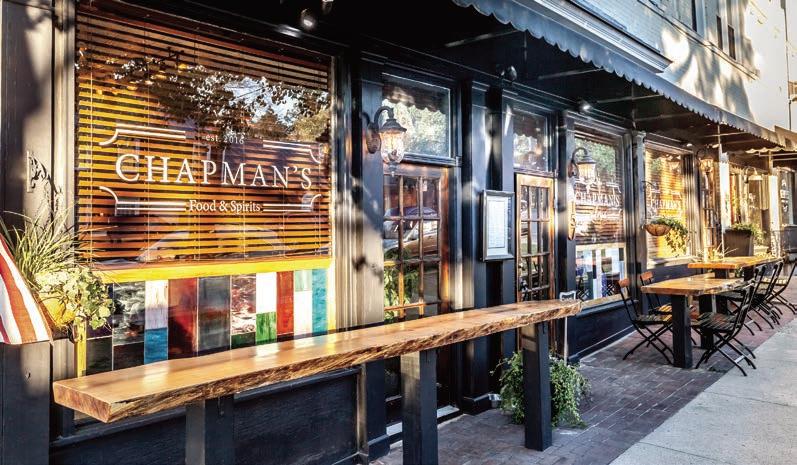






Itwas the final day of the 2020 PGA Show in Orlando when news hit American shores that the streets of the Chinese city of Wuhan had fallen silent, with some 11 million people put under tight quarantine after a mysterious illness began circulating in a wet market a month earlier. Little did the clubmakers, the apparel vendors, gadget innovators and the 40,000 visitors to the golf industry’s premier trade show realize their world would come to a screeching halt in six weeks as COVID-19 gripped the globe.
The PGA Show was canceled in 2021, ending a streak of conclaves dating to 1954, when vendors sold wares out of car trunks at a winter PGA golf tournament in Dunedin, Florida. A scaleddown version was held in 2022, with some 15,000 attendees and half the usual number of exhibitors.
Yet the health of golf remained robust during the pandemic. A foursome in the great out-of-doors was Exhibit A for social distancing. The game has gotten even stronger — witness Pinehurst Resort saying in January that nine golf courses aren’t enough.
And the 2023 PGA Show in Orlando in late January reflected that with a remarkable rebound of its own. The Orange County Convention Center was back to near-full capacity, and the golf industry flocked en masse and sans masks to another edition of old home week.

After two days of trekking the aisles and wagging the chin, I came away with some ideas on swinging faster, practicing more effectively and walking more comfortably.
Swing Hard: Marty Jertson is a club designer for the PING manufacturing company based in Phoenix, a PGA of America member
and an occasional qualifier for PGA Tour events and major championships. He missed the cut in the 2018 PGA Championship at Bellerive Country Club and was frustrated by seeing other pros bomb tee shots a half-wedge shot farther than him.
“I packed my bag that Friday feeling debilitated,” Jertson says. “My life’s goal was to play the weekend in a major. I knew then I didn’t stand a chance if I didn’t get some distance — a lot of distance.”
Through his work designing more than 100 clubs and balls for PING, Jertson was friends with Sasho MacKenzie, an authority in golf instruction and the biomechanics of speed generation. MacKenzie had been compiling data over several years on overspeed training (swinging a headless golf club as hard as possible) and overload training (swinging a headless club that weighs more than your driver).
They combined Jertson’s clubmaking acumen with MacKenzie’s science and created the prototype for a product that would be launched in February 2021 as The Stack System. Jertson did the work over 2018-19, qualified for the PGA at Bethpage Black in 2019, and made the cut with his newfound length.
“A year later at the PGA, I had tons of speed,” he says. “I was hitting it 30 yards longer. That was the key to me making the cut and having a dream week. It was borne out of personal frustration. Sasho had all the research, the algorithms, the data, the exercise science behind it.”
The device they have created features a training club and five weights that enable 30 unique weight combinations. The accompanying iPhone app sets up your program according to your needs and guides you through setting the club and workouts with the proper weights. Three times a week, you go through a training regimen swinging the club and training your body and mind to generate speed.
“We took my own frustration and passed it on to the market,” Jertson says. “We’ve literally helped thousands of golfers.”
Lean Left: Have trouble keeping your weight on your left side
PROMO CODE: FOXFIRE23


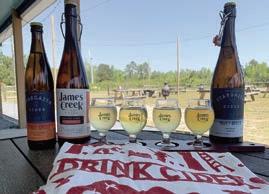
The member’s favorite, this Pinehurst golf course offers wide manicured fairways and large elevated fast rolling greens. Fairway bunkers are strategically placed to grab the wayward shot and there is no lack of sand guarding the greens.

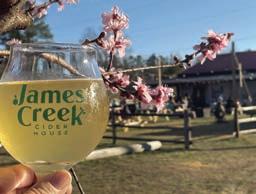
Widely considered the most challenging course, the Grey Fox features hilly terrain, several doglegs and towering pines. Golfers must avoid the sand and position the ball on the proper side of the fairway so that they get the best approach angle to the small greens.
For more information please contact: Brad Thorsky, PGA, Director of Golf
27281-9763 • 910 295-5555 • bthorsky@greatlifegolf.com
(for a right-handed golfer) on chip and pitch shots? The Chipping Plate from Why Golf is a foolproof antidote. You simply stand on the bright orange plate and address your shot with your weight on your left side. If you move off the ball, the base of the plate will tilt to the right. Instant feedback.
Why Golf is headquartered in Escondido, California, and pledges with its golf training aids to “make the hardest sport less hard.” The company’s display booth featured one sign saying, “Suck less at golf.”

“To stop chunking the s**t out of your chips, keep at least 2/3 of your weight on your front foot throughout the swing,” reads the descriptive passage on the company order page. “When you do that on the Chipping Plate, it’ll stay flat. If you don’t, it will tilt back. If you still aren’t getting it, you’d best consider taking up a different sport.”
The company’s Pressure Plate works on the same concept with the full swing and helps you transfer your weight to your left side early in the downswing. Why Golf also introduced at the PGA Show the Arm Alarm, which uses wristbands and an attached cord to give real-time feedback on arm structure while helping golfers keep their elbows close to each other throughout the swing.
Tread Lightly: True Linkswear is the Cadillac golf shoe for the walking golfer.
The company set out in 2009 with Ryan Moore (the PGA Tour golfer) and brother Jason to make the consummate golf shoe for walkers, with Jason saying that tradi-











tional golf shoe manufacturers built “the equivalent of dress shoes — over-engineered, techy-looking foot cages.” They have built a business around selling shoes that look and feel more like an athletic shoe with outsoles designed and built so a golfer can better feel the terrain with his feet. The shoes arrive in a brown box with the words “Enjoy the Walk” printed on the top.
“Ever had that sensation you can read the greens under your feet?” Jason asks. “These shoes allow the player to feel the course like never before.”
I met Moore at the PGA Show in 2018 while writing Good Walks and came away with a pair of the company’s headliner Knit I shoe, an ultra-lightweight shoe that the company touted as feeling like you were wearing a sock. Now the Knit III has been introduced. An enhanced midsole keeps your feet more secure during the swing, and the reinforced heel pad makes it impossible to get a blister.
“We took everything that worked in the early shoe and made it a little better,” says company executive Brandon Wallach. “There is slightly more athletic shaping. There is a new compound midsole that gives you more stability in your swing. And we’ve eliminated the chance of a slight rubbing on the heel. Thirty-six holes — no problem with this shoe.”
The only downside of the Knit models are they are not waterproof. So if you’re playing on a Southern summer morning with the Bermuda rough heavy with dew, True’s waterproof models are a better fit. The Lux Hybrid was introduced in Orlando and is made with the same knit material so it breathes and lets air in, but it’s waterproof so it keeps the moisture out. It features a stylish leather saddle on either side of the uppers.
It’s just a slightly better mousetrap. The Orange County Convention Center was full of those at the PGA Show. It had to be to keep up with the appetite of a hearty golf market. PS



Lee Pace has written Golftown Journal since 2008. Contact him at leepace7@gmail.com and follow him on Instagram at @leepaceunc and on Twitter @leepacetweet.

VOTED THE WORLD’S MOST COMFORTABLE RECLINER
STRESSLESS RECLINERS FROM EKORNES
COME
Philharmonic’s 8th Annual year
Saturday, March 11, 2023 – A Night at the Opera
7:30pm, Owens Auditorium, BPAC, Sandhills Community College

A night of lyric splendor featuring four distinguished vocalists
MAGNOLIA COURSE
The Carolina Philharmonic’s 8th AnnualOOOOOOOOO GOLF TOURNAMENT
Music Education Programs serving 3,500 local children annually.
PINEWILD’S MAGNOLIA COURSE

Monday March 13, 2023 • Registration opens January 23, 2023
Proceeds to benefit the Music Education Programs of The Carolina Philharmonic, serving 3,500 local children annually.
FULL FIELD: 100 (25 TEAMS)
March 13 , 202 3 opens January 23 , 202 3 Entry fee includes: Continental Breakfast, Box Lunch Start: 930 AM Shotgun

information call Philharmonic 910.687.0287 www.carolinaphil.org
$150 PER PLAYER $540 PER TEAM Entry fee includes: Continental Breakfast, Box Lunch Start: 9:30 AM Shotgun
For additional information call The Carolina Philharmonic Box Office at 910-687-0287 www.carolinaphil.org


Saturday, April 15, 2023 – Schubert the Melodist
Featuring the return of internationally acclaimed violinist
Natasha Korsakova in concert with Maestro David Michael Wolff on the piano.

910-687-0287

202 3 , 202 3
Programs children annually.
FIELD: 100 (25 TEAMS)
$150 PLAYER $540 PER TEAM
Entry fee includes: Continental Breakfast, Box Lunch 9:30 AM Shotgun
The woman has a gold stud through her tongue, her companion a snarling tiger tattooed on his neck. They hover over cups of Crazy Vanilla and Chunky Chocolate as she describes the final scene from an old Tom Hanks movie in which a single white feather is lifted on a breeze to float gently through the universe.
“It’s symbolic of death and rebirth,” she says, and claims the movie’s protagonist is dying as he sits on a bench pondering his young son’s passage into tomorrow. The woman with the studded tongue says the feather’s random motion is evocative of fate and free will and that we are all reborn with our final breath, our souls gently ascending. The man with the tiger tattoo sees it differently: “Sometimes,” he says, “you’re just full of it.” And there, in the sumptuous clamor of the ice cream parlor, you become aware of a cold certainty that has nothing to do with feathers or movies or tattoos or tasty confections or the clear blue sky or the universe about which the stud-tongued woman is so emphatic on this spring morning when you are again reminded that for every bright romantic notion there’s a spiteful truth that will crush it.
 — Stephen Smith
— Stephen Smith
Stephen Smith’s Beguiled by the Frailties of Those Who Precede Us will be published this spring by Kelsay Books.

Between apocalyptic weather and the coronavirus pandemic, rapper J. Cole’s Dreamville Festival has had a rocky existence in its short history. But in spite of multiple postponements, Dreamville has been a huge success, starting with 2019’s sold-out debut at downtown Raleigh’s Dorothea Dix Park that immediately established it as one of the nation’s top hip-hop festivals. Dreamville’s second edition in 2022 expanded from one day to two with an onstage lineup featuring the entire roster of Cole’s Dreamville Records label, and it also sold out. Round three returns to Dix Park the first weekend of April as another multi-day affair. It should be another big success, with Cole himself in the headline slot.
April 1 - 2, Raleigh; dreamvillefest.com
Centered on the multi-style “traditional plus” music played and loved by its late, great founder, Doc Watson, MerleFest has been a tradition at Wilkes Community College since 1988. The venerable roots-music festival is a signpost event on the Americana circuit. And after the same pandemic problems that every other live-music event faced in recent years, it’s back with an impressive lineup featuring the Avett Brothers, Maren Morris, Little Feat, Tanya Tucker and more.
April 27 - 30, Wilkesboro; merlefest.org

Springtime in North Carolina means college basketball madness, azaleas blooming — and the earliest days of outdoor music. Our state has a staggering array of A-list music festivals spanning numerous genres from now until fall.
Here are some of what you should be making plans for.
The mountains of the far western corner of North Carolina are the setting for this springtime festival, which happens the same weekend as MerleFest. First conceived in 2021, this year’s model has a first-rate alternative-leaning lineup featuring Spoon, The Head and the Heart, Jason Isbell and Amythyst Kiah.

April 28 - 30, The Highlands Plateau; bearshadownc.com

Started in 2003 as a nonprofit music and dance festival, Shakori Hills takes place on a bucolic 9,000-acre spread in rural Chatham County. It’s probably the top camping festival in the greater Triangle region, with solid Americana lineups. Marty Stuart & His Fabulous Superlatives, Malian singer/guitarist Vieux Farka Touré, beach legends Chairmen of the Board and festival regulars Donna the Buffalo. There’s also a fall version of Shakori Hills, which happens every October.
May 4 - 7, Pittsboro; shakorihillsgrassroots.org

Dance to beach music with your toes in the sand at the 37th Annual Carolina Beach Music Festival on Saturday, June 3 from 11:00 a.m. to 5:00 p.m. Billed as “the biggest and only beach music festival actually held on the beach on the North Carolina coast,” three bands will be performing. Shows are accessible from the Carolina Beach Boardwalk at Cape Fear Blvd. and Carolina Beach Ave. S. For information on tickets call (910) 458-8434.
June 3, Carolina Beach
The granddaddy of music festivals in the Triangle, Festival for the Eno dates back to 1980 and happens on the grounds of Durham’s West Point Park. Started as a fundraiser for the Eno River Association, the festival — which also offers a craft and food market — has hosted a who’s who of Americana-adjacent and roots artists including Emmylou Harris, Doc Watson and Loudon Wainwright III. Recent years have featured rising regional acts including Mipso, Rainbow Kitten Surprise and Indigo De Souza.
July 1 and 4, Durham; enofest.org


Reputedly the first event in America to be called a “folk festival,” Asheville’s Mountain Dance and Folk Festival was founded in 1928 by the folk music legend, Bascom Lamar Lunsford. It remains the longest continuously running folk festival in the country, and it’s as much about the folk dance traditions of Western North Carolina as the music.
Aug. 3 - 5, Asheville; folkheritage.org
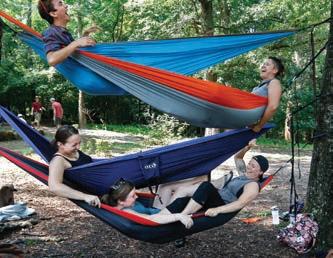
A newcomer to the North Carolina festival circuit, the Earl Scruggs Music Festival debuted last year at the Tryon International Equestrian Center in Mill Spring. As you’d expect for a festival named after the man who invented the three-finger style of bluegrass banjo, the lineup trends toward classic bluegrass and Americana.
Sept. 1-3, Mill Spring; earlscruggsmusicfest.com
Although he made his mark as an artist elsewhere, John Coltrane was born and raised in Hamlet, North Carolina. He was one of the towering figures of 20th century jazz, a key collaborator with Miles Davis, Duke Ellington and his fellow North Carolina native Thelonious Monk. The John Coltrane International Jazz and Blues Festival has been paying tribute to his legacy every Labor Day weekend since 2011 with solid lineups — 2022 featured trumpeter Chris Botti, singer Patti LaBelle and saxophonist Kirk Whalum, among others.
Sept. 2 - 3, High Point; coltranejazzfest.com
Downtown Raleigh has a well-earned reputation for doing music festivals right, and one of the events that helped pave the way is the alternative-slanted Hopscotch. Originally started in 2010 under the auspices of the Indy Week newspaper, it showed off Raleigh’s walkable grid of downtown nightclubs and outdoor stages to fantastic effect. Past headliners have included Flaming Lips, The Roots, Solange Knowles and St. Vincent. Hopscotch director Nathan Price reports that this year’s model should feature “an expanded lineup closer to pre-COVID size.” Here’s hoping.
Sept. 7 - 9, Raleigh; hopscotchmusicfest.com
In 2015, the National Council for the Traditional Arts brought the long-running National Folk Festival (which has been around since 1934) to Greensboro for a three-year run. It was such a success that, after the national festival’s Greensboro run ended, the city opted to keep it going as the rebranded North
Carolina Folk Festival. Last year’s lineup was typically eclectic, featuring everything from George Clinton’s P-Funk All-Stars to the Winston-Salem Symphony String Quartet. Expect more of the same in 2023.

Sept. 8 - 10, Greensboro; ncfolkfestival.com
The International Bluegrass Music Association moved its annual business convention and festival to Raleigh in 2013, where it has been a huge success. Between the convention, trade show, “Bluegrass Ramble” nightclub showcases, awards show and street festival, total attendance can top 200,000 when the weather’s good. Past headliners have included Steve Martin, Alison Krauss, Béla Fleck and just about every notable picker and singer in the genre. Year in and year out, it’s downtown Raleigh’s biggest music festival.
Sept. 26-30, Raleigh; worldofbluegrass.org

Sponsored by Raleigh’s Americana/roots radio station, That Station, 95.7FM, That Music Festival made its debut in June 2022 at Durham Bulls Athletic Park with an all-North Carolina lineup featuring American Aquarium, Steep Canyon Rangers, Mountain Goats, Rissi Palmer and more. The sophomore edition is tentatively scheduled for October, most likely in Durham again. October, Durham; thatstation.net/that-music-fest

Music lovers will be flocking to the Outer Banks, beach chairs in hand, for the 12th Annual Bluegrass Island Music Festival October 19-21 held at the Roanoke Island Festival Park overlooking miles of the pristine waters of Roanoke Sound. Buy your tickets and book your lodging well ahead of time. Acts this year include The Goodwin Brothers, Seth Mulder & Midnight Run, Rhonda Vincent & The Rage, Po’ Ramblin’ Boys, Leftover Salmon, The Kody Norris Show, Thunder & Rain, AJ Lee & Blue Summit, The Kitchen Dwellers, The Steeldrivers, Darin & Brooke Aldridge, Breaking Grass, Tim O’Brien and the incomparable Sam Bush.
October 19-21, Manteo; bluegrassisland.com PS


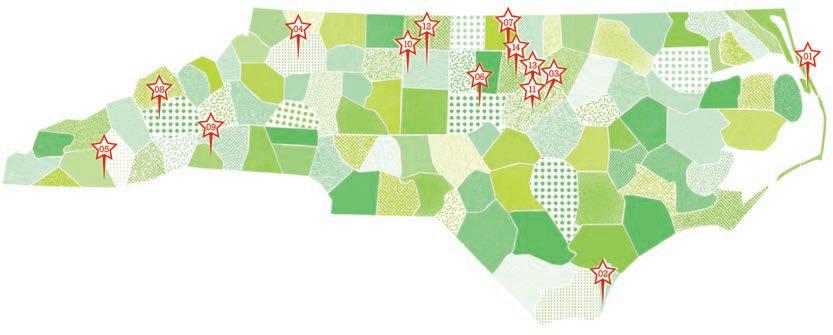
The arrival of dawn on March 10, 1865, became an unwelcome wake-up call for Lt. Gen. Judson Kilpatrick. Stirred from his bed by the sound of thundering hoofbeats, the Union cavalry leader, clad only in his nightshirt and drawers, rushed to the front porch of Charles Monroe’s farmhouse, 8 miles east of present-day Southern Pines on what is now the Fort Bragg — soon to be Fort Liberty — Army reservation. Having commandeered the house for his temporary headquarters, what Kilpatrick saw shocked him. Hordes of Confederate cavalry were swooping down on his sleeping encampment, slashing with sabers and firing point-blank at bleary-eyed Union troops. Thus began “The Battle of Monroe’s Crossroads.”
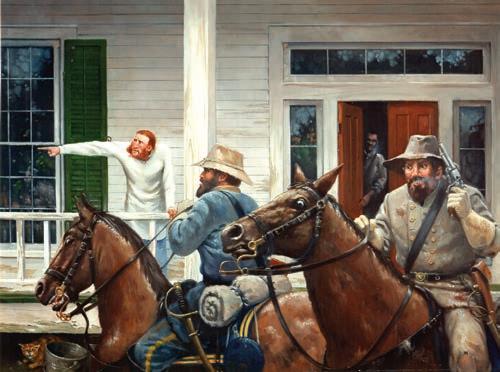

“In less than a minute,” Kilpatrick would later report, the Confederate horsemen “had driven back my people, and taken possession of my headquarters, captured the artillery (two cannons), and the whole command was flying before the most formidable cavalry charge I ever have witnessed.” The general’s immediate thought was, “Here is four years’ hard fighting for a major general’s commission gone up with an infernal surprise.”
Tagged with the scathing moniker “Kill-cavalry” because of a history of unnecessarily putting his troops in harm’s way, the general’s improvident failure to set pickets and safeguard his headquarters was an especially egregious omission and could well torpedo his military career. It enabled Confederate cavalry, led by Gen. Wade Hampton and subordinate generals Joseph Wheeler and Matthew Butler, to ride undetected and unopposed straight into the Union camp.
Kilpatrick’s attention may have been distracted by the presence of a woman. Depending on the historian consulted, the woman was either the beautiful Marie Boozer or a plain Yankee schoolmarm named Alice. In either case, the woman was believed to be
sharing Kilpatrick’s bed at the farmhouse. The general, it seems, was caught with his pants down.
One objective of the Confederate attack was to capture Kilpatrick. A cadre of Georgia cavalry, finding a man still in his bedclothes standing on the porch of Monroe’s farmhouse, demanded to know where the Union general was. It was Kilpatrick, of course, and he quickly pointed to a figure riding off in the distance, “There he goes on that black horse!” exclaimed the general.
The Georgians turned and rode off in pursuit. Leaving either Alice or Marie behind, Kilpatrick scrambled off the porch, climbed aboard a stray horse — not his prized Arabian stallion “Spot” — and promptly hightailed it into the woods, where many of his cavalrymen had retreated. To this day, the general’s flight is disparagingly labeled “Kilpatrick’s Shirt-Tail Skedaddle.”
The Confederates had good reason to target Kilpatrick, whom they had come to despise for his part in the Union Army’s devastating blitz of the South. Six months earlier, on Sept. 2, 1864, Gen. William Tecumseh Sherman’s 60,000 Union soldiers had occupied and burned the city of Atlanta when depleted
Confederate forces — commanded initially by Gen. Joseph Johnston, followed by Gen. John Bell Hood — were unable to halt the Union troops’ advance. In response, the president of the Confederacy, Jefferson Davis, installed Gen. P.G.T. Beauregard as the commander of the newly formed Department of the West, comprised of five Southern states that included Georgia, South Carolina and North Carolina.
But with fewer than 30,000 soldiers scattered over several states, Beauregard was equally powerless to prevent Sherman’s next move, his “March to the Sea,” made during November and December, 1864. During a five-week trek from Atlanta to Savannah, Union soldiers laid waste to military installations, factories and railroads in an effort to choke off the Confederacy’s economic lifeblood. Leading the Union cavalry was Kilpatrick, whose zeal for destroying enemy property made him, according to Sherman, “just that sort of man to command my cavalry on this expedition.” The general, aware of Kilpatrick’s faults, also referred to him as “a damn fool.”
After the Union troops reached Savannah on Dec. 21, 1864, commander-in-chief Gen. Ulysses S. Grant considered having Sherman move his army north by sea to Virginia, where the two generals would combine their forces to finish off Lee in Petersburg. But Sherman had a different plan in mind. He proposed marching his men north through the Carolinas to link up with Grant. Sherman persuaded his commanding general that the maneuver would devastate resistance in both states. Grant agreed, ordering him to “make your preparations to start on your expedition without delay . . . break up the railroads in South and North Carolina, and join the armies operating against Richmond as soon as you can.”
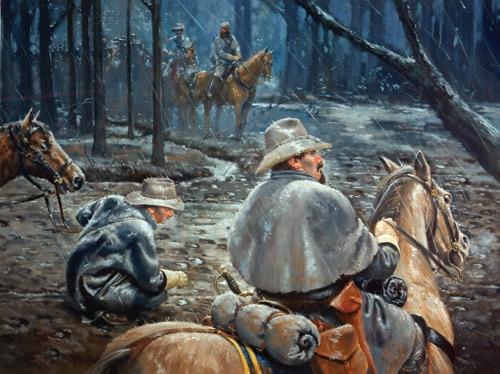
The bulk of Sherman’s army began exiting Savannah at the end of January 1865, soon entering South Carolina. Sherman was not inclined to treat the first state to secede gently. “The whole army is burning with an insatiable desire to wreck vengeance upon South Carolina,” he would write. “I almost tremble at her fate, but feel that she deserves all that seems in store for her.”
Sherman and other Union commanders have been criticized for rebuffing the pleas of numerous former slaves seeking the army’s protection during its Southern campaign. Hungry and fearful of being recaptured (or worse) by their former masters, the liberated, but nonetheless desperate, slaves attempted to attach themselves to the Union force. But the army mostly stiff-armed them on the grounds that the Blacks need for food and supplies would drain available resources and slow the
march. In one measure of retribution against the slaveholders in the Deep South, Sherman issued an edict setting aside 400,000 acres of coastal areas in South Carolina, Georgia, and Florida for freed slaves, an order later reversed by Andrew Johnson.

Gen. Wade Hampton, commanding the cavalry supporting Lee’s army in Virginia, could not bear the thought of being absent from the upcoming fight in his home state of South Carolina. Hampton, deemed by Confederate Gen. James Longstreet the “greatest cavalry leader of our or any age,” was granted leave by Lee to return to the state along with Gen. Matthew Butler and the latter’s cavalry division.
Hampton also convinced Lee to place him in command of the Confederate cavalry in the area. This created friction between Hampton and “Fighting Joe” Wheeler, who had days before led his men to victory over Kilpatrick’s cavalry at Aiken, South Carolina. Hampton and Wheeler managed to put aside any ill feelings and established an effective working relationship, later evidenced at Monroe’s Crossroads.
In the early stages of the Carolinas Campaign, Sherman kept Beauregard and Hampton guessing where his army was heading. To confuse them, he ordered the Union left wing westward toward Augusta, Georgia, while directing his right wing to feint in the direction of Charleston. Then Sherman brought the troops back together to make a beeline to Columbia, South Carolina. The state capital was lightly defended, and Hampton had no choice but to order his troops to evacuate.
On Feb. 17, Sherman’s unopposed army occupied the city.
A massive fire broke out that consumed most of Columbia’s buildings. Arguments raged regarding who caused the conflagration. Did the responsibility lie with fleeing Confederates who allegedly set fire to a storehouse of cotton bales? Or was the fire ignited by vengeful Union soldiers? Sherman pointed the finger at Hampton, who pointed his own, presumably uplifted, digit back at “Uncle Billy.”
The two adversaries exchanged hostile messages regarding the fate of Union foragers, a number of whom Sherman claimed had been murdered by Confederate soldiers after capture. He notified Hampton of his intent to respond in kind by executing a like number of Confederate prisoners. Hampton emphatically denied Sherman’s charge and upped the ante, promising that “for every soldier of mine ‘murdered’ by you, I shall have executed at once two of yours, giving in all cases preference to any officers who may be in my hands.” Both generals got each other’s message, and no further executions of foragers or other captives occurred.
The Columbia debacle accentuated fears of Confederacy higher-ups that annihilation of their cause was at hand. On Feb. 22, a desperate Gen. Lee relieved the beleaguered Beauregard and brought Gen. Johnston back to command the Department of the West. Johnston was under no illusion he could reverse the course of the war. In his memoirs, the general acknowledged that his primary object was “to obtain fair terms of peace; for the southern cause must have appeared hopeless then to all intelligent and dispassionate southern men.”
Given the Confederate Army’s vanishing manpower, achieving any terms beyond the CSA’s unconditional surrender would be a daunting undertaking. At the time Sherman crossed into North Carolina (March 3, 1865), the only Confederate infantry in Sherman’s immediate vicinity was Gen. William Hardee’s corps
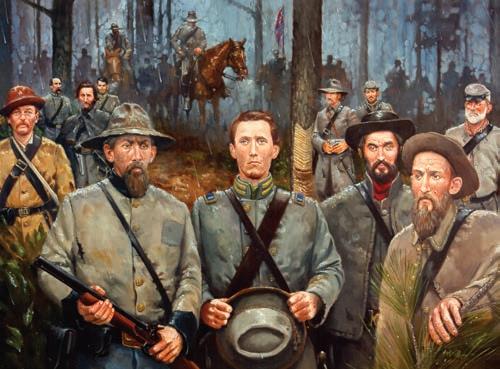
of 6,000 soldiers. Outnumbered 10 to 1, the most Hardee could be expected to do was shadow Sherman’s advance.
A more workable short term option for Johnston was employing his Hampton-led cavalry to dog the Federals with hit-and-run raids. As author Eric J. Wittenberg explained in his book, The Battle of Monroe’s Crossroads, the 4,000 horse soldiers of Hampton, Wheeler and Butler resisted Sherman by “hovering around the edges of the Federal column like a swarm of angry hornets ready to exact a heavy toll whenever an opportunity presented itself.”
Another dilemma for Johnston was not knowing where the Union Army would head after sacking Columbia. Sherman’s actual next destination was Fayetteville. Once there, his army could obtain supplies transported by steamboats sailing up the Cape Fear River from the coastal port of Wilmington, the latter having fallen into Federal hands in February. After destroying the arsenal at Fayetteville, Sherman intended to cross the Cape Fear and move his army to Goldsboro, North Carolina, where it would link up with Gen. John Schofield’s corps of 30,000 soldiers. Their combined force of 90,000 soldiers would then join Grant in Virginia for the final push against Lee.
Acritical element of Sherman’s strategy was getting to Fayetteville before Hardee. Doing so would enable him to block or destroy the bridges across the river. Either measure would prevent Hardee’s corps and Confederate cavalry units from joining up with Braxton Bragg’s corps and other remnants of Joe Johnston’s dwindling forces.
Johnston’s strategy was basically a mirror image of Sherman’s. If Hardee reached Fayetteville ahead of the Federals, he was directed to cross the river and blow up the bridges behind him. This would frustrate, or at least delay, Sherman’s own crossing. Meanwhile, Hampton’s cavalry would hound the Union Army, inhibiting its progress.
The race would entail both Federal and Confederate forces passing through Moore County. Exhausted forces on both sides shivered as incessant, near-freezing rains with accompanying spring floods hampered their movements. Moore County was a quagmire! Kilpatrick described the grueling conditions as “the most horrible roads, swamps, and swollen streams.”
When Kilpatrick entered the county on March 7, he was several miles ahead of Sherman, who sent a message directing his cavalry leader “to deal as moderately by the North Carolinians as possible.” The general also counseled Kilpatrick to “keep up the seeming appearance of pushing after Hardee, but really keep your

command well in hand, and the horses and men in the best possible order as to food and forage.”
As Kilpatrick consumed a meal of boiled sweet potatoes at the farm of Evander McLeod (near present day Pinebluff) on the evening of March 8, it had become abundantly clear that the West Point grad would be hard-pressed to avoid hostilities with the Confederate cavalry buzzing around him. Wade Hampton’s men had left McLeod’s farmstead just hours before.
The impending danger was compounded by Kilpatrick’s decision to send out scouting parties in search of alternative routes to avoid his troops’ overtaxing of the roads. As Wittenberg writes, “The farther his (4,000) men spread out . . . the more the Federals risked attack by marauding Confederate cavalrymen hovering just beyond the fringes of Kilpatrick’s column.”
At times, Kilpatrick seemed oblivious to these concerns. During the following day’s march, a Confederate prisoner, while walking alongside the carriage of “Little Kil” —he stood 5 feet, 3 inches in height — observed the general laying his head in Alice’s (or Marie’s?) lap and dangling his feet out the carriage window.

Meanwhile, at about 2 p.m. on March 9, Kilpatrick’s Third Brigade, headed by Col. George Spencer, arrived at the small hamlet of Solemn Grove, comprised of Buchan’s post office, a store, a mill and a few houses, including that of Malcolm Blue. Spencer was followed by William Way’s dismounted Fourth Brigade accompanied by 150 Confederate prisoners. Little Kil’s first and second cavalry brigades, commanded by Col. Thomas Jordan and Brig. Gen. Smith Atkins, respectively, were farther behind.
Upon receiving intelligence that Hampton’s cavalry was heading for Fayetteville, Kilpatrick concocted a scheme. He would seek to intercept the Confederate horsemen and prevent their planned rendezvous with Hardee, now certain to beat the Federals to the Cape Fear. The gambit meant blocking three different roads that Hampton and his subordinates, Wheeler and Butler, might potentially use: Morganton Road, Chicken Road to the south, and Yadkin Road to the north. Kilpatrick ordered Spencer to block the Yadkin Road. Another sortie was assigned to Way’s 400-man dismounted brigade. It marched farther east to block Morganton Road. Atkins, following behind as a rear guard, was urged to close up his brigade’s distance from Spencer and Way. The three brigades were ordered to establish camp at Monroe’s Crossroads, though circumstances would prevent Atkins from arriving there until well after hostilities commenced the following morning.

Way’s brigade reached Monroe’s Crossroads
at 9 p.m. and set up camp adjacent to Charles Monroe’s farmhouse at the intersection of Morganton and Blue’s Rosin roads. Spencer’s brigade arrived soon thereafter, setting up its camp on a plateau that sloped toward a dismal swamp. Meanwhile, Jordan’s First Brigade, 3 miles distant, blocked Chicken Road. Kilpatrick’s separation of his brigades carried risk as each unit was rendered more vulnerable to attack. At the time Kilpatrick’s bugler sounded “taps” the night of March 9, there were around 1,400 Union soldiers at Monroe’s Crossroads, but had Kilpatrick played into the enemy’s hands by dividing his brigades?
Meanwhile, Confederate Gen. Butler had an unexpected prize fall into his lap. While patrolling with his division on the evening of March 9, he detected the sound of approaching hoofbeats. Butler called out, “Who goes there?”
“Fifth Kentucky,” came the response. Butler knew the 5th was a Federal unit.
He beckoned the soldiers to come forward and, without firing a shot, Butler promptly disarmed and took into custody 28 unsuspecting Kentuckians. The captives were all members of Kilpatrick’s headquarters escort company. It appeared Kilpatrick had been nearby and had narrowly avoided his own capture, hightailing it to Charles Monroe’s farmhouse. Sharing the residence with Little Kil and Alice (or Marie) were brigade leaders Spencer and Way, who bunked upstairs. Despite his close call and the distressing disappearance of the escort company,
Kilpatrick inexplicably neglected to post any guards.
As a gleeful Butler regaled Hampton with the tale of his evening’s adventure, a scout rushed up to inform the generals that the tracking of hoofprints had led him to discover the union cavalry’s encampment at Monroe’s Crossroads. It appeared unguarded to the scout. Hampton, after conferring with Wheeler and Butler, sensed an opportunity to catch Kilpatrick napping (or otherwise occupied) and ordered a dawn attack.
Wheeler thought the attack would be more effective if made on foot. But Hampton overruled him. “General Wheeler,” said Hampton, “as a cavalryman I prefer making this capture mounted.” And so it was that at 5:20 a.m., the oft-wounded Hampton, astride his horse, led his cavalry’s ferocious charge into the Union camp. The 49-year-old master horseman reputedly dispatched three Union soldiers in the process.
It seemed certain Hampton was on the threshold of a glorious victory — one that could demonstrate to all that the war was not yet over. But the unforced errors were not the sole province of Kilpatrick. Several columns led by Wheeler were supposed to attack through an area that was marshy and full of thick vegetation. Wheeler thought the terrain would pose no hindrance, but he was wrong. Approximately half of Wheeler’s troops failed to make it through the muck and were late to the battlefield.
The attack caused the Union soldiers guarding the 120 Confederate prisoners to flee to the woods. Suddenly freed, the now ex-prisoners ran headlong and “frantic with joy” toward their liberators. At first, the cavalrymen thought the men sprinting toward them were retreating soldiers whose forward charge had been repulsed. The resulting confusion caused a temporary blunting of the Confederate assault. Furthermore, one of Butler’s brigades did not take part in the attack as it was ordered to escort the elated, but famished, former captives to the rear.
The newly liberated soldiers weren’t the only hungry ones. The
Confederate cavalry soldiers also craved food. Many availed themselves of the opportunity to poke through the Union camp to find and consume whatever edibles they could lay their hands on. They looted belongings, scavenging shoes, blankets, saddles and mounts. The breakdown in discipline stemmed the momentum of Hampton’s onslaught and provided the Union cavalry breathing space to reform and rally. Local Civil War buff Jim Jones believes that the cavalrymen’s attention to the needs and whereabouts of their horses following the initial rush may also have added a distraction that would have been avoided had the charge occurred dismounted. Hampton made another decision he would regret by not searching the farmhouse. Unknown to the general, Union brigade leaders Spencer and Way were still inside, hidden upstairs. Playacting by Kilpatrick’s paramour prevented the officers’ capture. Adopting the airs of a Southern belle, Alice (or Marie) greeted Hampton at the porch and assured him there were no Union officers inside her home. The chivalrous Hampton, not wanting to further trouble such a fine lady, posted a guard to keep rebel soldiers out of her hair, then bid the woman adieu. Spencer and Way remained grounded in the bedroom until the battle’s conclusion.
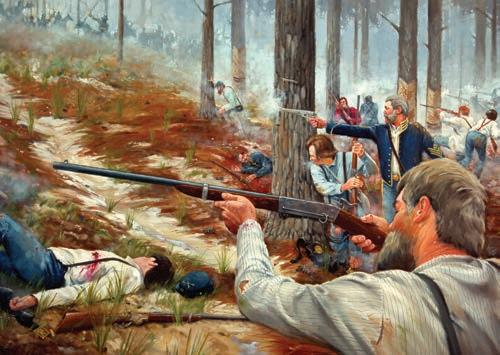
Given the disarrayed and bedraggled appearance of Kilpatrick’s cavalry, it seemed next to impossible they could mount any sort of counterattack. Though they were chilled to the bone and nearly naked, most of Kilpatrick’s men had the presence of mind to grab their guns and ammo before fleeing from the camp. Jones points out that the veterans in Sherman’s army were as battletested as any in the war. “They bent at times but never broke,” says Jones.
According to Ohio horse soldier T.W. Fanning, Little Kil “cobbled together enough men to order an advance.” Then at his command, the horse soldiers “moved up the ridge, firing as they moved.” According to Fanning, the men “with one wild shout, swept down upon the rebels, who were swarming around the captured artillery and Kilpatrick’s former headquarters.” Adding impetus to Kilpatrick’s thrust were Capt. Theodore Northrup and his company of Union scouts. They had rushed to Monroe’s Crossroads upon learning of Kilpatrick’s plight.
Engaged as they were in premature celebration, it was Hampton’s cavalry now caught flatfooted. In the fog of the renewed gunfire, Lt. Ebenezer Stetson, who had been hiding from the Confederates under the farmhouse since the initial attack, surreptitiously crept to one of the cannons just 20 steps away. He

loaded it with canister and fired away at the startled Confederates. Several of Hampton’s men were killed instantly. A second artillerist, believed to be Sgt. John Swartz, rushed to the second cannon and fired it to like effect. Together, they were able to inflict considerable damage until the guns were recaptured by Gen. Wheeler, largely through the ultimately fatal charge of Capt. Moses Humphrey. Swartz also died from wounds suffered in the battle.
Gen. Wheeler suddenly made his presence felt, charging into the camp and, according to a Georgian horseman, “killed several Yankees in close encounter.” He and Butler made repeated efforts to drive Kilpatrick’s men back toward the swamp, but they were met with withering gunfire courtesy of the Spencer seven-shot repeating carbines carried by an Ohio unit in the Union cavalry. Southern casualties were exacerbated because Wheeler’s and Butler’s men were packed close together due to the vagaries of the landscape. A disconsolate Butler reported that the carbines “made it so hot for the handful of us we had to retire. In fact, I lost 62 men (wounded and killed) there in about five minutes time.”
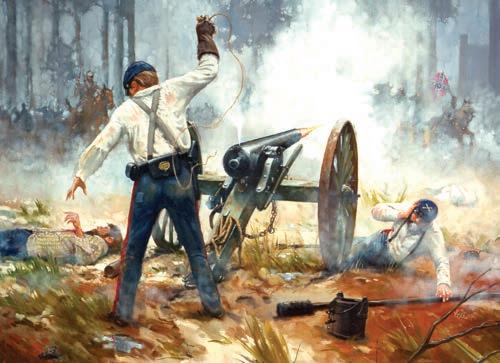
Coupled with his belief that Sherman’s infantry would soon be coming to Kilpatrick’s aid, Hampton ordered his cavalry to pull out and move on to Fayetteville. Both sides claimed victory at Monroe’s Crossroads. Kilpatrick boasted that he had driven the Confederate cavalry from the field. However, his negligent preparations would come under fire and Sherman never trusted him again. Hampton claimed his surprise attack freed prisoners and successfully stalled the Union cavalry, thus allowing Hardee to escape unscathed across the Cape Fear. But Hampton’s failure to capitalize on his initial advantage undercuts a claim of Confederate victory.
The precise number of battlefield deaths at Monroe’s Crossroads is unknown. The CSA wasn’t keeping records anymore, and Kilpatrick probably inflated the casualty figures. It would appear from accounts that a total of 150 dead is not far off. It was the last true cavalry engagement of the war.

As a result of Hardee’s escape, Joe Johnston was able to marshal 21,000 troops to battle Sherman at Bentonville on March 19. But Johnston was still outnumbered 3 to 1. As a result of heavy losses in this battle and the futility of further conflict, Johnston ultimately surrendered to Sherman. This followed Lee’s surrender to Grant at Appomattox Court House on April 9th.
Today the Monroe’s Crossroads battlefield can only be accessed by prior arrangement. Happily that’s not difficult. Jonathan Schleier, associated with Fort Bragg’s Cultural Resource Program, offered to provide a guided tour but because the penetrating boom of military
munitions can still be felt there 157 years after Lt. Stetson fired a cannon at the site, Schleier had to find a date from Range Control when artillery operations would not be occurring in the area.
On a hot July morning, I met Schleier at Fort Bragg’s Ranger Station No. 2, located at the point where East Connecticut Avenue meets the post’s border. As the roadway continues into the reservation, it’s called Morganton Road, an unimproved pathway little changed since 1865. Riding in Schleier’s Ford F-150 we observed neither vehicles nor people en route to the remote battlefield. Schleier said that present day officers, as part of their training, walk the battlefield to study the tactics and maneuvers of the long-ago fight.
The Monroe farmhouse is gone, but an obelisk marks its location. The battlefield has a surprising number of monuments, all of them installed since 1990. There are combatants’ graves, including those specifically dedicated to unknown soldiers. One memorial is situated at the spot where Lt. Stetson unleashed his cannon. Schleier unfolded maps to aid in comprehending the movements of the antagonists. Walking the ridge-filled terrain and eyeing the steep incline down to the swamp it was possible to visualize the logistical challenges faced by both cavalries.
The old battlefield was eerily quiet. Not a sound to be heard. Just like it must have been before all hell broke loose at 5:20 a.m. on March 10, 1865.
To schedule a tour of the battlefield, call Jonathan Schleier at (910) 396-6680 PS
Pinehurst resident Bill Case is PineStraw’s history man. He can be reached at Bill.Case@thompsonhine.com.


1948
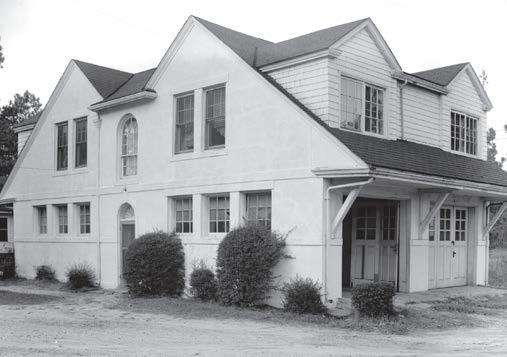
Somewhere, over the rainbow, James Walker Tufts and James Boyd can share a high five. They have found the perfect occupants for their respective villages: He plays golf. She rides. They are happily, healthfully retired, spending summers at their primary residence Up North — Ohio, that is. But when winter’s chill descends so do they, to Pinehurst, with her horse, of course.
“Such interesting people here,” says Linda Salvato.
As are they. Guy Salvato is an artist, graphic and otherwise, who worked at Manhattan’s slickest advertising agency during the Mad Men era. Most of his paintings are golf related. Linda was a consultant in health care marketing. Their primary Ohio home is a Cotswolds gatehouse, designed by an architect who traveled to the Cotswolds for inspiration.
Guy’s four sons are grown, married, with grandchildren of their own. So why not search out a pied-à-terre that pushed their respective buttons? Something quaint without being cloying, surrounded by a community of wine-sipping, cheesenibbling, concert-going, philanthropic world citizens conversant in, well, just about everything.
No need for massive square footage — the great-grandchildren can stay elsewhere. Instead, a massive need for style and originality.

They were not aware of Pinehurst’s suitability until one of Guy’s sons discovered an international golf art seminar at Pine Needles Lodge & Golf Club.
Let’s go!
“I had been here in the ’90s but it was Linda’s first time,” Guy recalls.
While he was putt-erring around the village, Linda inquired if anybody kept horses. A drive down Young’s Road revealed the answer: “Perfect!” she exclaimed.
The “hunt” for lodging was on. Her requirements: stringent, including proximity to the village, with a historic component, maybe a juicy backstory.
You can’t get much more historic than a wood shingle Colonial Revival multi-unit residence (sounds better than “boarding” or “apartment” house) built by Old Man Tufts himself, in 1896, the same year Pinehurst was founded. The elongated structure stretched across the corner of Palmetto and Cherokee roads. Construction cost: $1,650.
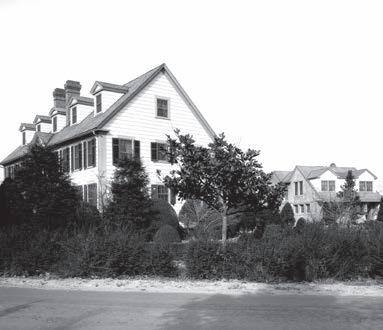


A carriage house with hayloft was added about 1921. When the carriage trade declined, garage doors were installed to accommodate the family roadster. Perhaps because the property attracted more transients than blue bloods, little mention of Palmetto’s history or occupants survives in the society pages.
A subsequent owner renamed it Cloverleaf, described as being located near one of four gates in a fence meant to keep out wild pigs.
The property fell into disrepair. Neighbors (and the village appearance commission) branded it an eyesore until, according to The Pilot, the owner was cajoled into slapping on a coat of paint before the 2005 U.S. Open.

Then, in 2006, a local builder transformed the sad carriage house into two chic pieds-à-terre, adding a Palladian window to the atrium, a tiny skylight and enough moldings, paneled doors and ornate window frames with deep sills to wow a creative retired couple from Ohio.
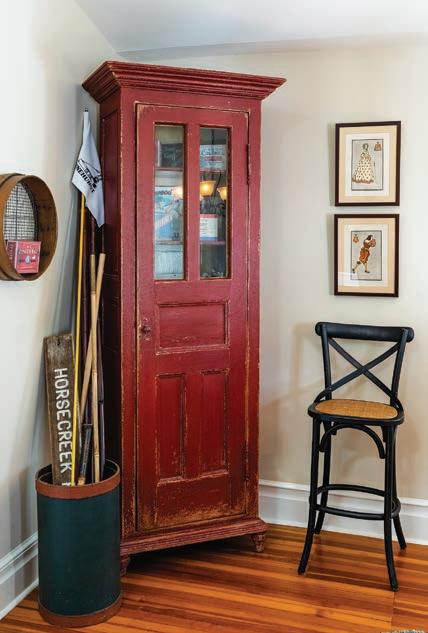
Linda opened the door and exclaimed, “This is it!” They snapped up Unit 10 in 2012, made some adjustments to a bathroom and moved in for the 2013 winter season.
Carriage houses, like Manhattan lofts, are rare, therefore precious. Never mind the steep flight of stairs or the modest 1,380 square footage. Concentrate, rather, on the character afforded by original mismatched pine floorboards, wall space for Guy’s golf paintings and a garden plot for this master gardener/cook. On the nights Guy doesn’t prepare an Italian original, village bistros are within walking distance.
Next came a wicked pleasure enjoyed by mature second homeowners: furnishing rooms from scratch in a breezy style dubbed “Online Eclectic,” with the exception of a rare Wells Fargo (stagecoach company, not bank) desk Linda found while strolling through the shops in Cameron.


“We both have decent design sense,” Guy notes, so no need for an interior designer. Shades of seafoam, sand, gray, vanilla and other pale neutrals flow into each other. Stylized patterns on bedroom fabrics add whimsy, while uncluttered surfaces throughout make small rooms appear larger.
Uncluttered, however, doesn’t mean empty. Or boring. Brightly painted tin cans line one wall shelf. Wood-turned bowls, dramatic examples of craft art, sit center stage on a tall dining area table seating four but folding out to accommodate eight. The kitchen is a little gem. An old-timey Pinehurst equestrian poster
speaks for Linda. A golf bag anchors a corner. Guy’s stylized golf tee painting dominates a wall. That he and Andy Warhol traveled in the same New York circles is no surprise since both worked in ad illustration. Nor is Guy’s regret for not saving some of the pop artist’s discards. In 2022, one from a Marilyn Monroe series sold at auction for $195 million.
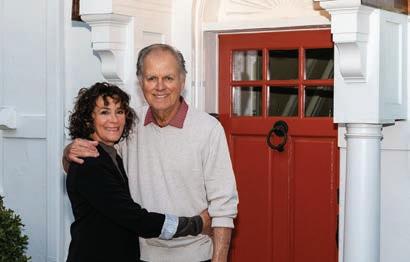
With the plantation shutters open and sun streaming from the tiny skylight, the residence with multiple ceiling pitches and lovely landscaping feels like a treehouse. To describe interior décor as hard to describe is the ultimate compliment.


The Carriage House beside Palmetto House, after a century of multiple owners and iterations, finished a win-win. The Tufts-Boyd plan worked. Old Town gained another historic reclamation. And two transplants from the Midwest — plus a retired racehorse of championship lineage — discovered nothing could be finer than to winter in Carolina.
“Being here, I feel a sense of relief,” says Linda, who rides almost daily. “I feel energized to do things I wouldn’t do up north.”
“I love doing the exterior work,” and playing golf, of course, Guy adds. “I worked hard for many years. I looked forward to something like this.”
Linda’s summation: “Two beautiful homes and everything else . . . we do have a blessed life.” PS






















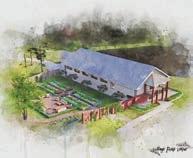

Among the wild blossoms beginning to carpet the soft earth — fig buttercups and field mustard, blood root and Johnny jump-ups, dimpled trout lilies and Carolina jessamine — the common blue violet is one you’ll likely spot in damp woods and shady meadows. Also called the woolly blue violet, wood violet or common meadow violet, this short-stemmed perennial is known for its heart-shaped leaves (edible) and white-throated purple flowers (also edible).
March is a born artist, wideeyed and unbridled, creating for the sake of life itself.
The genius begins with a single daffodil, warm and bright, nodding in a stream of honeyed light. Each petal is a world of yellow. Each leaf, a meditation on green.
The artist becomes obsessed.
One daffodil becomes a series, progressively ab stract, until each flower is more essence than form.

Paintings expand into wild landscapes. Quick as the hand can move, a rolling sea of yellow star bursts stretches from one canvas to the next. The foreground softens. Thick and messy brushstrokes evoke a tender, playful light.
Crested irises and yellow violets now spill from the frenzied brush, followed by flowering clover, purple deadnettle, wild onions, chickweed and a downy flush of dandelions.
Robins begin to appear. Bluebirds, too. Tree swallows and towhees and red-winged blackbirds. The painting nearly sings out.
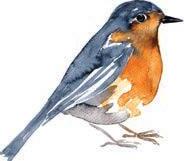
Leafless branches, stark among the luscious earth, are suddenly laden with clusters of crim son whirligigs. Redbuds are studded with bright fuchsia blossoms. Soft pink swirls adorn silverlimbed saucer magnolias.


The brush strokes quicken. A sweep of tulips colors the earth magnificent. As spring bursts forth, flower by brilliant, quivering flower, the artist surrenders to the muse.
But have you ever seen a bird’s foot violet? Named for the shape of its narrowly lobed leaves (they do, in fact, resemble bird feet), this viola species prefers dry, sandy soil and pine lands. The five-petaled flower, lilac or bicolored with bright orange anthers, is largely considered to be the most beautiful violet in the world. But what spring bloomer isn’t a bewitching vision to our winter-weary eyes?
Our life is March weather, savage and serene in one hour.
— Ralph Waldo EmersonThe cold earth is thawing. The Full Sap Moon rises on Tuesday, March 7. The maple sap is flowing once again.
The vernal equinox occurs on Monday, March 20 — along with a dark, balsamic moon. As a new season and cycle begin, we return to the garden.
In early March, sow carrot, spinach, radish, pea and turnip seeds directly into the softening earth. Mid-month, sow chives, parsley, onion and parsnips.



At month’s end: beet and arugula seeds. Broccoli, cauliflower and cabbage seedlings can be transplanted outdoors mid- to late-month. Ditto kale, Swiss chard, lettuce and kohlrabi.
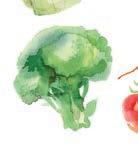
Growing season has commenced. As the days grow warmer still, behold the simple miracle of spring’s return. The miracle of life itself. PS

A journey through the decadent menu items at some of your favorite local eateries.
Eat dessert first - as in the first meal of the day! With Mason’s brunch offerings like made-from-scratch hotcakes, waffles, croissant beignet donuts, brioche French
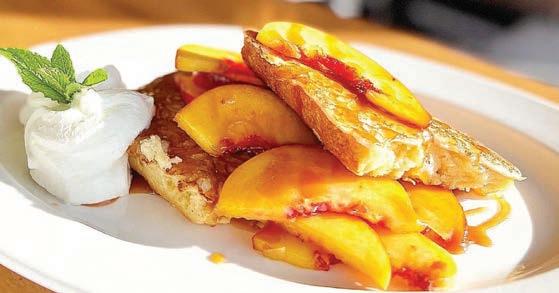

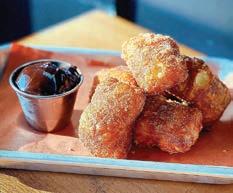


toast, biscuits and cinnamon rolls, you’ll be happy to dive right into the sweet lane, no matter the time of day. So go ahead and indulgethere’s no judgement here.

Even though it is widely known as the Cradle of American Golf, there are more sweet spots at Pinehurst Resort than just hitting the ball in the center of the clubface - and most of them come out of Head Pastry Chef Shelly Taylor’s bake shop. Whether it’s the 1895 Grille’s decadent Chocolate Soufflé (top right), presented




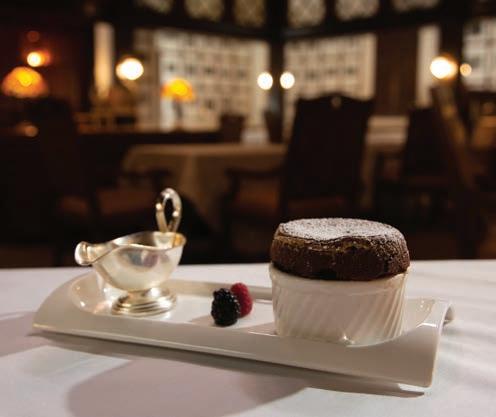
with a stirring pour of white chocolate anglaise, or the towering how-did-youmake-that meringue of The Carolina Dining Room’s Mile High Key Lime Pie (top left), desserts at Pinehurst are as carefully considered as any approach shot into the green on Pinehurst No. 2. But you don’t need a caddie’s help with these.
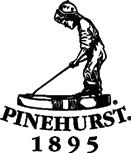
Table on the Green is a military spouse owned and operated restaurant that proudly serves the local community. Usually known for their fine Thai and American cuisine, a not-so-well kept secret is the enticing dessert menu at Table on the Green. Located on Midland Country Club



and open to everyone, Table on the Green is a hidden gem in the Pines that takes pride in service and making customers feel at home. Our bread pudding, panna cotta, and apple cobbler are just a few items on our mouth watering dessert menu that keeps our customers coming back for more!



At Limitless Meal Supply, we create balanced meals, desserts and snack options for all dietary lifestyles using locally sourced ingredients. We fulfill online orders— from a renovated kitchen in the heart of Carthage— in four easy steps: we post a menu for the week, you order a meal plan or individual items, we cook, and then you pick up your

meals or we can even delivery to you.
You’re sure to find a meal plan that fits your lifestyle but we could also curate one just for your unique dietary needs.
We also offer freshly baked breads, pastries and desserts that can be enjoyed in our cozy cafe. Grab a weeks’ worth of meals in one stop— the options are Limitless!
Located in the heart of Southern Pines, The Ice Cream Parlor Restaurant has been a place to meet and share a smile with friends and family since 1976. There are bits of the past sprinkled in with the present when you look at the menu. Classic


Even though it is widely known as the Cradle of American Golf, there are more sweet spots at Pinehurst Resort than just hitting the ball in the center of the clubface - and most of them come out of Head Pastry Chef Shelly Taylor’s bake shop. Whether it’s the 1895 Grille’s decadent Chocolate Soufflé (top right), presented
desserts like banana splits, malts, shakes and floats are elevated by our adventurous homemade ice cream flavors, including vegan options. With a variety of food, drinks and dessert, there’s something for everyone to enjoy at The Ice Cream Parlor.


with a stirring pour of white chocolate anglaise, or the towering how-did-youmake-that meringue of The Carolina Dining Room’s Mile High Key Lime Pie (top left), desserts at Pinehurst are as carefully considered as any approach shot into the green on Pinehurst No. 2. But you don’t need a caddie’s help with these.




Karefree Farms has pick your own strawberries, blueberries and grapes. Along with the freshest fruits and vegetables, we also have homemade desserts, just like Grandma used to make - ice cream, jams, jellies and a wide variety of baked goods made fresh daily
Karefree Farms has pick your own strawberries, blueberries and grapes. Along with the freshest fruits and vegetables, we also have homemade desserts, just like Grandma used to make - ice cream, jams, jellies and a wide variety of baked goods made fresh daily
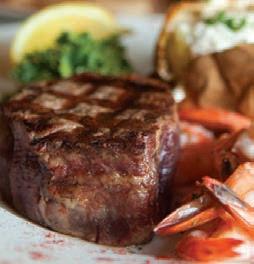





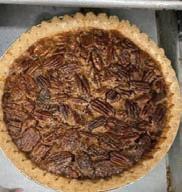


in our farm kitchen. In our market you can find farm-raised beef, local honey and local eggs. Cool off this summer with a refreshing scoop of homemade ice cream or one of the best orangeades around. Have a seat in a rocking chair on our large front porch and visit with us for a while.
in our farm kitchen. In our market you can find farm-raised beef, local honey and local eggs. Cool off this summer with a refreshing scoop of homemade ice cream or one of the best orangeades around. Have a seat in a rocking chair on our large front porch and visit with us for a while.


left),



Center, 1185 W. Pennsylvania Ave., Southern Pines. Info: (910) 692-7376.
Friday, March 3
LUNCH BUNCH. 11 a.m. Adults 55 and older are invited to dine on different cuisines each month as you visit different restaurants in the area. Carpool with friends or meet at the restaurant. Dining locations will be chosen the week before. Info: (910) 692-7376.
03.01
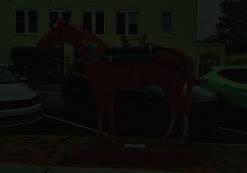
Painted Ponies
Although conscientious effort is made to provide accurate and up-to-date information, all events are subject to change and errors can occur! Please call to verify times, costs, status and location before planning or attending any events.
TAX HELP. AARP will provide free tax help on Saturdays and Mondays until April 17. Contact the library for more information about making an appointment. Southern Pines Public Library, 170 W. Connecticut Ave., Southern Pines. Info: www.sppl.net.
TECH HELP SESSIONS. SPPL offers one-on-one technology help sessions. A library staff member will sit with you to assist with accessing eBooks, learning how to use a new device, navigating a computer, and to answer any other basic technology questions. Southern Pines Public Library, 170 W. Connecticut Ave., Southern Pines. To make an appointment come into the library or visit www.sppl.net.

Wednesday, March 1
PAINTED PONIES. The 14 Painted Ponies will line Broad Street in Southern Pines until April 5. Enjoy a day of dining and shopping while checking out the 2023 Painted Ponies Art Walk. Info: www.carolinahorsepark.com.
Thursday, March 2
SOUL FLOW. 6:30 p.m. For adults 55 and older. Join a gentle flow guaranteed to soothe the mind, body and soul. A mixture of yin and restorative yoga. Great for all levels. Cost is $12 for residents and $17 for non-residents. Douglass Community
MASTER CLASS. 1 - 2 p.m. The Four Freshmen will host a performance coaching class and question and answer session. McPherson Theater, BPAC, 3395 Airport Road, Pinehurst. Info: www.ticketmesandhills.com.
ART RECEPTION. 5 - 7 p.m. The March exhibit will showcase the work of Artists League members and feature a variety of styles and mediums. The exhibit will be on display through March 31. Artists League of the Sandhills, 129 Exchange St., Aberdeen. Info: www.artistleague.org.
CONCERT. 7 - 8:45 p.m. The Four Freshmen are in concert at BPAC. Owens Auditorium, 3395 Airport Road, Pinehurst. Info and tickets: www.ticketmesandhills.com.
PEACE, LOVE AND TROLLEY. 7 - 9 p.m. Grab your ’70s costumes and come for a trolley ride. Rec Room, 750 S.W. Broad St., Southern Pines. Info and tickets: www.ticketmesandhills.com.
Saturday, March 4
HORSE SHOW. Sedgefield at the Park Kickoff NCHJA “C” H/J Show. The show continues through March 5. Carolina Horse Park, 2814 Montrose Road, Raeford. Info: www.carolinahorsepark.com.
ESSENTIAL OIL PRESENTATION. 2 p.m. Adults and teens are invited to a presentation on “Essential Oils 101.” Learn the facts about how to use essential oils to enhance your everyday life. Southern Pines Public Library, 170 W. Connecticut Ave., Southern Pines. Info: (910) 692-8235 or www.sppl.net.
THEATER SHOW. 2 - 3:15 p.m. Annie Jr. is presented by the Imagine Youth Theater Junior. There will be a second showing at 5 p.m. Hannah Center Theater, 3300 Airport Road, Southern Pines. Info and tickets: www.ticketmesandhills.com.
PERFORMANCE. 5 - 6 p.m. A Sick Day for Amos McGee is adapted for the stage. Owens Auditorium,
3395 Airport Road, Pinehurst. Info and tickets: www.ticketmesandhills.com.
PIRATE ISLAND. 7 - 9 p.m. Come on a trolley cruise with a vacation theme and some island music. Southern Pines Brewing Company, 565 Air Tool Drive, Southern Pines. Info and tickets: www.ticketmesandhills.com.
LIVE MUSIC. 7 - 10 p.m. The Moore Area Shag Society will host the Cat5 Band. Tickets are $15. Attendees must be 21 or older. Down Memory Lane, 161 Dawkins St., Aberdeen. Info: (910) 215-4054.
Sunday, March 5
GROUNDED SOUL CLASS. 2 - 3 p.m. Come to a grounded soul kokedama class. Registration is required. Hatchet Brewing Company, 490 S.W. Broad St., Southern Pines. Info: www.hatchetbrewing.com.
WRITING GROUP. 3 p.m. Interested in creating fiction, nonfiction, poetry or comics? Connect with other writers and artists, chat about your craft and get feedback on your work. All levels are welcome. The session will meet at the library. Southern Pines Public Library, 170 W. Connecticut Ave., Southern Pines. Info: lholden@sppl.net.
Tuesday, March 7
BRAIN FITNESS. 10 - 11 a.m. Adults 55 and older are invited to a Brain Fitness class. Eve Gaskell will be the instructor. Free of charge. Douglass
03.04
Community Center, 1185 W. Pennsylvania Ave., Southern Pines. Info: (910) 692-7376.
TEEN HOMEWORK SPACE. 4 p.m. Working on a group project, homework, or just looking for a space to commiserate? Visit our “teen homework and collaboration space.” Southern Pines Public Library, 170 W. Connecticut Ave., Southern Pines. Info: www.sppl.net or email: kbroughey@sppl.net.
Thursday, March 9
GATHERING AT GIVEN. 3:30 p.m. In collaboration with Sandhills Community College Culinary Arts Department, Felicia Everts will speak about the SCC farm-to-table initiative and provide patrons with a taste from their garden. Given Memorial Library, 150 Cherokee Road, Pinehurst. Info: (910) 295-3642.
Friday, March 10
TEA AND TECH. 11 a.m. Do you have any questions about using a computer? Come to our Tea and Tech program, where we will go over basic computer tips and tricks and answer any questions you may have. Southern Pines Public Library, 170 W. Connecticut Ave., Southern Pines. Info: msilva@sppl.net.
POP UP. 5 - 8 p.m. There will be a NCOyster 365 pop up with live music by Mary Stone. Hatchet Brewing Company, 490 S.W. Broad St., Southern Pines. Info: www.hatchetbrewing.com.
Saturday, March 11
CRAFT DAYS. Children and their families can come by the library for Drop-in Craft Days and work on crafts at their own pace. Southern Pines Public Library, 170 W. Connecticut Ave., Southern Pines. Info: (910) 692-8235 or www.sppl.net.
HORSE SHOW. Southern Pines Horse Trial. The horse trials continue through March 12. Carolina Horse Park, 2814 Montrose Road, Raeford. Info: www.carolinahorsepark.com.
MARCH MADNESS. 7 - 9 p.m. Wear your team colors and play the games. Hosted by the Sandhills Trolley Company. Rec Room, 750 S.W. Broad St., Southern Pines. Info and tickets: www.ticketmesandhills.com.
Sunday, March 12
AWARDS CEREMONY. 2- 4 p.m. The Moore County Writers’ Competition Awards Ceremony will recognize great writers within the community. Free admission, registration required. Weymouth Center for the Arts & Humanities, 555 E. Connecticut Ave., Southern Pines. Info: www.weymouthcenter.org.
GOLF TOURNAMENT. The Carolina Philharmonic hosts the eighth annual Maestro’s Cup. All proceeds benefit music education programs. Pinewild Country Club, 85 Glasgow Drive, Pinehurst. Info: (910) 687-0287 or www. carolinaphil.org.

PHOTO CLUB. 7 p.m. The Sandhills Photography Club monthly meeting will feature Brian Osborne from The Photo Classroom in Charlotte presenting a program on leading lines. Guests are welcome. Sandhills Horticultural Gardens Visitors Center, 3245 Airport Road, Southern Pines. Info: www. sandhillsphotoclub.org.
Tuesday, March 14
AARP TALK. 12 - 12:30 a.m. Adults 55 and older are invited to join AARP for a fraud talk. Free of charge. Douglass Community Center, 1185 W. Pennsylvania Ave., Southern Pines. Info: (910) 692-7376.
TEEN WRITING CLUB. 4 p.m. Are you interested in creative writing and storytelling, connecting with other writers, and getting feedback on your work? Join us for the Teen Creative Writing Club. Southern Pines Public Library, 170 W. Connecticut Ave., Southern Pines. Info: www.sppl.net or email: kbroughey@sppl.net.
Wednesday, March 15
HORSE SHOW. 4 star XC Course Walk with 5 star event rider Ariel Grald. Carolina Horse Park, 2814 Montrose Road, Raeford. Info: www.carolinahorsepark.com.
WHITEHALL BOOK CLUB. 2 p.m. Southern Pines Public Library’s book club for adults meets to discuss this month’s book. The book club is open to the public. Whitehall Property, 490 Pee Dee Road, Southern Pines. Info: mmiller@sppl.net.
Thursday, March 16
HORSE SHOW. The Setters’ Run Farm Carolina International CCI and HT will take place. Watch the top horses and riders in the world compete. Enjoy the vendor village and food court every day with a kids’ zone on Saturday, March 18, from 9 a.m. - 4 p.m. Carolina Horse Park, 2814 Montrose Road, Raeford. Info: www.carolinainternationalcci.com.
READ BETWEEN THE PINES. 5 p.m. SPPL’s book club for adults meets to discuss this month’s book. Southern Pines Public Library, 170 W.
Connecticut Ave., Southern Pines. To join email mhoward@sppl.net.
CIVIL WAR ROUND TABLE. 6:30 p.m. The guest speaker will be Civil War author and preservationist Harry Smeltzer, with a presentation on “The History of the 69th New York.” Meeting starts at 7 p.m. Open to the public. Civic Club, corner of Pennsylvania Avenue and Ashe Street, Southern Pines. Info: (910) 246-0452 or mafarina@aol.com.
Friday, March 17
SHAMROCKS AND SHENANIGANS. 7 - 9 p.m. Scavenge through Southern Pines to find the pint of gold. Hosted by the Sandhills Trolley Company. Rec Room, 750 S.W. Broad St., Southern Pines. Info and tickets: www.ticketmesandhills.com.
Saturday, March 18
READER’S THEATER. 11 a.m. Reader’s Theater will be hosted by Senior Moments from the Moore County Senior Enrichment Center. The Senior Moments troupe will be visiting the library once a month to share a different reader’s theater and interact with children and families. Given Memorial Library, 150 Cherokee Road, Pinehurst. Info: (910) 295-3642.
MET OPERA. 12 p.m. Lohengrin. Sunrise Theater, 250 N.W. Broad St., Southern Pines. Info: (910) 692-3611 or www.sandhillsrep.org.
CALLIGRAPHY CLASS. 6 - 8 p.m. Dominique, owner of Thoughtfully Rustic, will walk you through the basics of the calligraphy alphabet and teach beginner techniques. Learn about and take home all the tools and materials every calligrapher needs. Against the Grain Shoppe, 220 N.W. Broad St., Southern Pines. Info and tickets: www.ticketmesandhills.com.
THEATER SHOW. 7 p.m. “Judy, Joni and Joan: The Music of Judy Collins, Joni Mitchell and Joan Baez” will be presented by the Sandhills Repertory Theatre. There will be more showings on March 19 at 3 p.m. and 7 p.m. Sunrise Theater, 250 N.W. Broad St., Southern Pines. Info: (910) 692-3611 or www.sandhillsrep.org.
CONCERT. 7 - 8:30 p.m. Kelli O’Hara, star of The Gilded Age, is in concert at BPAC. Owens Auditorium, 3395 Airport Road, Pinehurst. Info and tickets: www.ticketmesandhills.com.
SHAMROCKS AND SHENANIGANS. 7 - 9 p.m. Scavenge through Southern Pines to find the pint of gold. Hosted by the Sandhills Trolley Company. Rec Room, 750 S.W. Broad St., Southern Pines. Info and tickets: www.ticketmesandhills.com.
Sunday, March 19
MASTER CLASS. 10 - 11:15 a.m. Kelli O’Hara, star of The Gilded Age, will be hosting performance coaching and a question and answer session. McPherson Theater at BPAC, 3395 Airport Road, Pinehurst. Info and tickets: www.ticketmesandhills.com.
POP UP IN THE PINES. 11 a.m. - 4 p.m. The mini market series continues with food trucks, live music and more than 30 vendors. Hatchet Brewing Company, 490 S.W. Broad St., Southern Pines. Info: www.hatchetbrewing.com.
STEAM. 2:30 p.m. Elementary-aged children and their caregivers are invited to learn about topics in science, technology, engineering, art and math, and to participate in STEAM projects and activities. Southern Pines Public Library, 170 W. Connecticut Ave., Southern Pines. Info: (910) 692-8235 or www.sppl.net.
ARTS AND HUMANITIES SERIES. Part two of the series “Lumbee Life, Lore and Legacy” will feature Kaya Littleturtle with a presentation on “Performance and Symbolism in Regalia and Dance.” Cost is $15 for members and $20 for non-members. Weymouth Center for the Arts & Humanities, 555 E. Connecticut Ave., Southern Pines. Info: www.weymouthcenter.org.
Monday, March 20
GOLF CHAMPIONSHIP. 9 a.m. The Kelly Cup Golf Championship to benefit the Sandhills Children’s Center will be played at Forest Creek Golf Club. Win a vehicle from Cooper Ford with a hole-in-one at the a designated par-3 hole. Lunch will be provided after. Forest Creek Golf

Club, 200 Meyer Farm Dr., Pinehurst. Info: (910) 692-3323 or www.sandhillschildrenscenter.org.


WOMEN OF WEYMOUTH. 9:30 a.m. The Women of Weymouth will have a guest speaker, Jack Maisano, Pinehurst resident, author and former president of the American Chamber of Commerce in Hong Kong. Free admission. Weymouth Center for the Arts & Humanities, 555 E. Connecticut Ave., Southern Pines. Info: www.weymouthcenter.org.
ADULT STORY TIME. 12 - 1 p.m. Meet in the Eric Nelson Room for an adult short story readaloud. Bring your lunch, snacks or coffee and sit back to listen. No prep work required. Given Memorial Library, 150 Cherokee Road, Pinehurst. Info: (910) 295-3642.

Tuesday, March 21
BRAIN FITNESS. 10 - 11 a.m. Adults 55 and older are invited to a Brain Fitness class. Eve Gaskell will be the instructor. Free of charge. Douglass Community Center, 1185 W. Pennsylvania Ave., Southern Pines. Info: (910) 692-7376.
BINGO. 11 a.m - 12 p.m. Adults 55 and older are invited to play 10 games of bingo. Cost is $4 for residents and $6 for non-residents. Douglass Community Center, 1185 W. Pennsylvania Ave., Southern Pines. Info: (910) 692-7376.

BOOK CLUB. 2 p.m. The James Boyd Book Club meets with this month’s book, The Saints of Swallow Hill, by Donna Everhart. Free admission, registration required. Weymouth Center for the Arts & Humanities, 555 E. Connecticut Ave., Southern Pines. Info: www.weymouthcenter.org.
TEEN BOARD GAME NIGHT. 4 p.m. BYOG (Bring Your Own Game) or use one of ours. Southern Pines Public Library, 170 W. Connecticut Ave., Southern Pines. Info: www.sppl.net or email: kbroughey@sppl.net.
Wednesday, March 22
BOOK EVENT. 5:30 p.m. Weymouth Center
































for the Arts & Humanities welcomes Marjorie Hudson in conversation with Katrina Denza. She will read from her debut novel, Indigo Field . Free admission, registration required. Weymouth Center for the Arts & Humanities, 555 E. Connecticut Ave., Southern Pines. Info and tickets: www.ticketmesandhills.com.
Thursday, March 23
BUSINESS PRESENTATION. 5:30 p.m. Have you ever wanted to start your own food truck or been curious to hear about what it’s like to own one? Join us for “Beyond Brick and Mortar: Food Trucks.” Hear from Adam Roth, owner of Bayou in the Pines Food Truck, and Rachel Jurgens, owner and operator of Red’s Corner, about their experience of running these popular businesses. Southern Pines Public Library, 170 W. Connecticut Ave., Southern Pines. Info: www.sppl.net.
Friday, March 24



HORSE SHOW. Sedgefield at the Park Early Spring “C” H/J Show. The show continues through March 26. Carolina Horse Park, 2814 Montrose Road, Raeford. Info: www.carolinahorsepark.com.
Saturday, March 25

CRAFT DAYS. Children and their families can come by the library for Drop-in Craft Days and work on crafts at their own pace. Southern Pines Public


Library, 170 W. Connecticut Ave., Southern Pines. Info: (910) 692-8235 or www.sppl.net.

DANCE. 2 - 8 p.m. Come to a shag workshop with Lacey Bramblett. There are multiple dance packages available for purchase. Carolina DanceWorks, 712 S.W. Broad St., Southern Pines. Info: (910) 725-1846 or carolinadanceworks@gmail.com.
CALLIGRAPHY CLASS. 6 - 8 p.m. Dominique, owner of Thoughtfully Rustic, will walk you through the basics of the calligraphy alphabet and teach beginner techniques. Learn about and take home all the tools and materials every calligrapher needs. Against the Grain Shoppe, 220 N.W. Broad St., Southern Pines. Info and tickets: www.ticketmesandhills.com.
Sunday, March 26
LIVE MUSIC. 2 - 4 p.m. Live music from Mary Stone. Hatchet Brewing Company, 490 S.W. Broad St., Southern Pines. Info: www.hatchetbrewing.com.

Tuesday, March 28

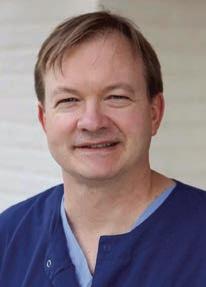

TEEN WRITING CLUB. 4 p.m. Are you interested in creative writing and storytelling, connecting with other writers, and getting feedback on your work? Join us for the Teen Creative Writing Club. Southern Pines Public Library, 170 W. Connecticut Ave., Southern Pines. Info: www.sppl.net or email: kbroughey@sppl.net.
MUSICIANS’ JAM SESSION. 6 - 9 p.m. Bring your own instrument and beverage or just come and enjoy the music. Attendees must have the COVID vaccination. Free admission, registration required. Weymouth Center for the Arts & Humanities, 555 E. Connecticut Ave., Southern Pines. Info: www.weymouthcenter.org.
Wednesday, March 29
PAGEANT. 2 - 4:30 p.m. The North Carolina Senior America Pageant. Owens Auditorium, 3395 Airport Road, Pinehurst. Info and tickets: www.ticketmesandhills.com.
Thursday, March 30
DOUGLASS CENTER BOOK CLUB. 10:30 a.m.
Multiple copies of the selected book are available for checkout at the library. The Douglass Center, 1185 W. Pennsylvania Ave., Southern Pines. Info: mmiller@sppl.net.

SOUL FLOW. 6:30 p.m. For adults 55 and older. Join a gentle flow guaranteed to soothe the mind, body, and soul. A mixture of yin and restorative yoga. Great for all levels. Cost is $12 for residents and $17 for non-residents. Douglass Community Center, 1185 W. Pennsylvania Ave., Southern Pines. Info: (910) 692-7376.
THEATER SHOW. 7 p.m. “An Evening with Oscar and Steve: The Music and Lyrics of Oscar Hammerstein and Stephen Sondheim” will be presented by the Sandhills Repertory Theatre. Sunrise Theater, 250 N.W. Broad St., Southern Pines. Info: (910) 692-3611 or www.sandhillsrep.org.
Sunday, April 2
JAZZ SERIES. 11:30 a.m. - 2 p.m. Enjoy live jazz music from Roland Barber. Bring your own blanket, chairs and picnic. Cost for members is $25 and non-members is $35. Weymouth Center for the Arts & Humanities, 555 E. Connecticut Ave., Southern Pines. Info: www.weymouthcenter.org.
THEATER SHOW. 2 p.m. “An Evening with Oscar and Steve: The Music and Lyrics of Oscar Hammerstein and Stephen Sondheim” will be presented by the Sandhills Repertory Theatre. Sunrise Theater, 250 N.W. Broad St., Southern Pines. Info: (910) 692-3611 or www.sandhillsrep.org.
POETRY. 4 p.m. Weymouth invites you to “ExperieNCe Poetry” during national poetry month with reading by acclaimed North Carolina poets. Bring your own chairs and drinks. Free admission. Weymouth Center for the Arts & Humanities, 555 E. Connecticut Ave., Southern Pines. Info: www.weymouthcenter.org.
Saturday, April 15

HERITAGE DAY. 10 a.m. - 4 p.m. Heritage Day showcases the Bryant House and McLendon Cabin. Both houses will be open and there will be live music, storytellers and demonstrations. Free admission. Bryant House, 3361 Mt. Carmel Road, Carthage.
CORVETTE SHOW. 11 a.m. - 1 p.m. Come view and vote on Corvettes. There will be door prizes, music and food trucks. Cost is $20. Southern Pines Chevrolet GMC, 10722 US 15-501, Southern Pines. Info: www.corvettesofsandhills.com.
PAINTED PONIES AUCTION. The 14 Painted Ponies will be auctioned off during a live online auction. Info: www.carolinahorsepark.com.
Mondays
WORKOUTS. 8:30 a.m. - 4:30 p.m. Adults 55 and older are invited to get their workout on. Open
Monday through Friday. Cost for six months: $15/ resident; $30/non-resident. Douglass Community Center, 1185 W. Pennsylvania Ave., Southern Pines. Info: (910) 692-7376.
SING FOR FUN. 9 - 10 a.m. Adults 55 and older can sing for fun while reaping the physical and mental benefits of a choir experience. Learn various songs from all genres. Cost per month is $36 for residents and $52 for non-residents. Douglass Community Center, 1185 W. Pennsylvania Ave., Southern Pines. Info: (910) 692-7376.
STRETCH AND MOVE. 10 - 11 a.m. Adults 55 and older are invited to do a gentle, low-impact dance with inspirational music. Cost is $36 for residents and $52 for non-residents per month. Douglass Community Center, 1185 W. Pennsylvania Ave., Southern Pines. Info: (910) 692-7376.
STRENGTH AND BALANCE WORKOUT. 11 - 11:45 a.m. Adults 55 and older are invited to enjoy a brisk workout that focuses on balance and strength. Free of charge. Douglass Community Center, 1185 W. Pennsylvania Ave., Southern Pines. Info: (910) 692-7376.
RESTORATIVE YOGA. 12 p.m. For adults 55 and older. Practice gentle movements to improve well-being, help alleviate pain and improve circulation. Bring your own mat. Free of charge. Douglass Community Center, 1185 W. Pennsylvania Ave., Southern Pines. Info: (910) 692-7376.
GAME ON. 1 p.m. For adults 55 and older. You and your friends are invited to come and play various games such as corn hole, badminton, table tennis, shuffleboard, trivia games and more. Each week enjoy a different activity to keep you moving and thinking. Compete with friends and make new ones all for free. Douglass Community Center, 1185 W. Pennsylvania Ave., Southern Pines. Info: (910) 692-7376.
BRIDGE. 1:30 - 4:30 p.m. For adults 55 and older. Enjoy games of bridge with friends. Douglass Community Center, 1185 W. Pennsylvania Ave., Southern Pines. Info: (910) 692-7376.
SOUTHERN SOUL LINE DANCING. 6 p.m. No experience necessary; put on your comfy shoes and groove to some funky tunes with funk master Terry Julius. For adults 18 and older. Cost is $6 for Southern Pines residents and $9 for non-residents. Douglass Community Center, 1185 W. Pennsylvania Ave., Southern Pines. Info: (910) 692-7376.
DANCE. 8 p.m. Take a Ballroom Bubbles class. The class is held online through Carolina Dance Works. Info: (910) 725-1846 or carolinadanceworks@gmail.com.
Tuesdays
PLAYFUL LEARNING. 10 a.m. - 2 p.m. Come for a drop-in, open playtime for ages birth - 3 years to
interact with other children and have educational playtime. Given Memorial Library, 150 Cherokee Road, Pinehurst. Info: (910) 295-3642.
HATHA YOGA. 10 - 11 a.m. For adults 55 and older. Increase your flexibility, balance, stability, and muscle tone while learning the basic principles of yoga alignment and breathing. You may gain strength, improve circulation and reduce chronic pain as we practice gentle yoga postures and mindfulness. Douglass Community Center, 1185 W. Pennsylvania Ave., Southern Pines. Info: (910) 692-7376.
BABY RHYMES. 10:30 a.m. Baby Rhymes is specially designed for the youngest learners (birth - 2) and their caregivers. Repetition and comforting movements make this story time perfect for early development and brain growth. There will be a duplicate session at 11 a.m. Dates this month are March 7, 14, 21 and 28. An active library card is required. Southern Pines Public Library, 170 W. Connecticut Ave., Southern Pines. Info: (910) 692-8235 or www.sppl.net.
GAME DAY. 12 p.m. Enjoy bid whist and other cool games all in the company of great friends. For adults 55 and older. Douglass Community Center, 1185 W. Pennsylvania Ave., Southern Pines. Info: (910) 692-7376.
TAI CHI. 1 p.m. Come learn tai chi. There is no age limit and the classes are open to the public. Aberdeen Parks and Recreation Station, 301 Lake Park Crossing, Aberdeen. Info: (910) 944-7275.
SPARK STORYTIME. 2:30 p.m. This Spark Storytime at Fire Station 82 is for ages birth through 2 and kids will have a chance to see firetrucks. Dates this month are March 7, 14, 21 and 28. Fire Station 82, 500 W. Pennsylvania Ave., Southern Pines. Info: (910) 692-8235 or www.sppl.net.

DANCE. 7 p.m. Take a group swing class with Carolina DanceWorks. Carolina DanceWorks, 712 S.W. Broad St., Southern Pines. Info: (910) 725-1846 or carolinadanceworks@gmail.com.
TABLE TENNIS. 7 - 9 p.m. Enjoy playing this exciting game every Tuesday. Cost for six months is $15 for residents of Southern Pines and $30 for non-residents. For adults 55 and older. Douglass Community Center, 1185 W. Pennsylvania Ave., Southern Pines. Info: (910) 692-7376.
Wednesdays
CHAIR YOGA. 10 - 11 a.m. For adults 55 and older. Help offset body aches encountered with desk work. This is an accessible yoga class for bodies not able to easily get up from and down to the floor. Do standing or sitting in a chair. Douglass Community
Center, 1185 W. Pennsylvania Ave., Southern Pines. Info: (910) 692-7376.



LEARN AND PLAY. 10 a.m. - 12 p.m. Come in for an open play date with your toddler or preschooler where there will be developmental toys and puzzles as well as early literacy tips on display for parents and caregivers to incorporate into their daily activities. Dates this month are March 1, 8, 15, 22 and 29. Southern Pines Public Library, 170 W. Connecticut Ave., Southern Pines. Info: (910) 692-8235 or www.sppl.net.
LINE DANCING. 12 - 1 p.m. Looking for new ways to get your daily exercise in and care for yourself? Try line dancing. For adults 55 and older. Douglass Community Center, 1185 W. Pennsylvania Ave., Southern Pines. Info: (910) 692-7376.
SLOW AND STRETCHY. 12 - 1 p.m. Adults 55 and older can flow through yoga poses slowly and intentionally, stretching everything from your head to your toes. Free of charge. Douglass Community Center, 1185 W. Pennsylvania Ave., Southern Pines. Info: (910) 692-7376.
CHAIR VOLLEYBALL. 1 - 2 p.m. For adults 55 and older. Get fit while having fun. Free to participate. Douglass Community Center, 1185 W. Pennsylvania Ave., Southern Pines. Info: (910) 692-7376.
BRIDGE. 1:30 - 4:30 p.m. For adults 55 and older. Enjoy games of bridge with friends. Douglass Community Center, 1185 W. Pennsylvania Ave., Southern Pines. Info: (910) 692-7376.
LET’S DANCE. 2 - 2:30 p.m. For adults 55 and older. Instructor Maria Amaya will introduce you to dance fitness in this 30-minute class designed for anyone who wants to gently and gradually increase their cardio function, mobility, balance and have fun at the same time. Free of charge. Douglass Community Center, 1185 W. Pennsylvania Ave., Southern Pines. Info: (910) 692-7376.
LIBRARY PROGRAM. 3:30 p.m. At The Library After School (ATLAS) is an after-school program for kindergarten through second graders who enjoy activities, crafts, stories, and learning. Dates this month will be March 1, 8, 15, 22 and 29. Southern Pines Public Library, 170 W. Connecticut Ave., Southern Pines. Info: (910) 692-8235 or www.sppl.net.
TAI CHI. 6:30 p.m. Come learn tai chi. There is no age limit and the classes are open to the public. Cost is $10 per class. Seven Lakes West Community Center, 556 Longleaf Dr., Seven Lakes. Info: (910) 400-5646.
YOGA. 6:30 - 7:30 p.m. Grab your yoga mat and head to Hatchet for a yoga session with Brady.
Session cost is $10 and includes a pint of our DILLIGAF lager. Hatchet Brewing Company, 490 S.W. Broad St., Southern Pines. Info: www.hatchetbrewing.com.
DANCE. 7 p.m. Take a social foundations group class with Carolina DanceWorks. Carolina DanceWorks, 712 S.W. Broad St., Southern Pines. Info: (910) 725-1846 or carolinadanceworks@gmail.com.
DANCE. 8 p.m. Take a Ballroom Bubbles class. The class is held online through Carolina DanceWorks. Info: (910) 725-1846 or carolinadanceworks@gmail.com.
Thursdays
MOORE COUNTY FARMERS MARKET. 9 a.m. - 1 p.m. The year-round market features “producer only” vendors within a 50-mile radius providing fresh, local and seasonal produce, fruits, pasture meats, eggs, potting plants, cut flowers and local honey. Crafts, baked goods, jams and jellies are also available. Market is located at the Armory Sports Complex, 604 W. Morganton Road, Southern Pines.
GIVEN STORY TIME. 10 a.m. Bring your preschooler to enjoy stories, songs and activities. Given Memorial Library, 150 Cherokee Road, Pinehurst. Info: (910) 295-3642.

BALANCE AND FLEXIBILITY. 10 - 11 a.m. Adults 55 and older are invited to take a class that will help reduce the risk of taking a tumble and increase your ability to recover. Free of charge.
Douglass Community Center, 1185 W. Pennsylvania Ave., Southern Pines. Info: (910) 692-7376.


MUSIC AND MOTION. 10:30 a.m. and 3:30 p.m. Does your toddler like to move and groove? Join us for outdoor Music and Motion to get those wiggles out and work on gross and fine motor skills. For 2 - 5-year-olds. Dates this month are March 2, 9, 16, 23 and 30. An active library card is required. Southern Pines Public Library, 170 W. Connecticut Ave., Southern Pines. Info: (910) 692-8235 or www.sppl.net.
KNITTING CLUB. 11 a.m. - 12 p.m. For adults 55 and older. Come with friends to create fun designs and memories. Supplies are provided. Free of charge. Douglass Community Center, 1185 W. Pennsylvania Ave., Southern Pines. Info: (910) 692-7376.
ADAPTIVE YOGA. 12 - 1 p.m. Adults 55 and older can enjoy yoga that meets you where you are. We’ll be creating a sense of balance and ease by slowly increasing your range of motion and mobility while maintaining your natural abilities. Free of charge. Douglass Community Center, 1185 W. Pennsylvania Ave., Southern Pines. Info: (910) 692-7376.










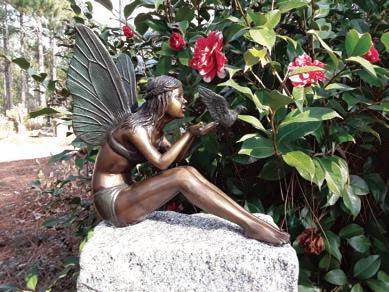

CHESS AND MAJHONG. 1 p.m. For adults 55 and older. All levels welcome. Douglass Community Center, 1185 W. Pennsylvania Ave., Southern Pines. Info: (910) 692-7376.

CABIN TOURS. 1 - 4 p.m. The Moore County Historical Association’s Shaw House grounds, cabins, and gift shop are open for tours and visits. The restored tobacco barn features the history of children’s roles in the industry. Docents are ready to host you and the cabins are open Thursdays, Fridays and Saturdays. Shaw House, 110 W. Morganton Road, Southern Pines. Info: (910) 692-2051 or www.moorehistory.com.
ORCHESTRA REHEARSALS. 6:30 - 8:30 p.m. The Moore Philharmonic Orchestra has weekly rehearsals. Membership is open to youth and adult community members and there is no fee to join. Wellard Hall at Sandhills Community College, 3395 Airport Road, Pinehurst. Info: www.mporchestra.com or email moorephilharmonicorchestra@gmail.com.
DANCE. 7 p.m. Take a master group class focusing on technique with Carolina DanceWorks. Carolina DanceWorks, 712 S.W. Broad St., Southern Pines. Info: (910) 725-1846 or carolinadanceworks@gmail.com.
TRIVIA NIGHT. 7 - 9 p.m. Come enjoy a beer and some trivia. Hatchet Brewing Company, 490 S.W. Broad St., Southern Pines. Info: www.hatchetbrewing.com.
Fridays
AEROBIC DANCE. 9 - 10 a.m. For adults 55 and older. Enjoy this low-to-moderate impact class with energizing music for an overall cardio and strength workout. Free of charge. Douglass Community Center, 1185 W. Pennsylvania Ave., Southern Pines. Info: (910) 692-7376.
TAP CLASS. 10 - 11:30 a.m. For adults 55 and older. All levels welcome. Cost per class: $15/resident; $30/non-resident. Douglass Community Center, 1185 W. Pennsylvania Ave., Southern Pines. Info: (910) 692-7376.
QIGONG. 1 p.m. For adults 55 and older. Classes will consist of chair and standing movements that can help soothe achy feet, tight hips, and low back pain and ease restriction in mobility. Free of charge. Douglass Community Center, 1185 W. Pennsylvania Ave., Southern Pines. Info: (910) 692-7376.
BRIDGE. 1:30 - 4:30 p.m. For adults 55 and older. Enjoy games of bridge with friends. Douglass




Community Center, 1185 W. Pennsylvania Ave., Southern Pines. Info: (910) 692-7376.



LINE DANCING. 3 - 4 p.m. For adults 55 and older. If you’re interested in learning dance moves and building confidence on the dance floor, this class is for you. Leave your inhibitions at the door and join in. Cost is: $36 for residents and $52 for non-residents per month. Cost is for a monthly membership. Douglass Community Center, 1185 W. Pennsylvania Ave., Southern Pines. Info: (910) 692-7376.
DANCE CLASS. 7 p.m. Carolina DanceWorks will hold newcomer group dance classes for the foxtrot and swing. Carolina DanceWorks, 712 S.W. Broad St., Southern Pines. Info: (910) 725-1846 or carolinadanceworks@gmail.com.
DANCE. 8 p.m. Take a Ballroom Bubbles class. The class is held online through Carolina DanceWorks. Info: (910) 725-1846 or carolinadanceworks@gmail.com. PS
919.774.4155 templeshows.org
919.774.4155 templeshows.org
MAR 3
The Four Freshmen: In Concert BPAC’s Owens Auditorium
“Annie Jr.” presented by Imagine Youth Theater Hannah Center Theater


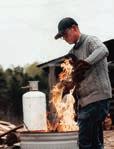


A Sick Day for Amos McGee BPAC’s Owens Auditorium

APRIL 13-30
APRIL 13-30
APRIL 13-30
APRIL 13-30

4


Saint Andrews Football Team FundraiserC.A.G.E. Wrestling Match Harris Court, Main Gym at Saint Andrews University

MAR 18 & 25 Calligraphy Class Against the Grain Shoppe

Kelli O’Hara: In Concert BPAC’s Owens Auditorium
NC Senior America Pageant 2023 BPAC’s Owens Auditorium

Gallery Hours: Monday - Saturday 12-3pm

Discovering Acrylics - Beth Ybarra - March 20, 21, 9:00-1:00 $106
Beginner’s Acrylic Pouring - Meredith Markfield - March 24, 11:30-2:30 $46
Explore Abstraction - Linda Bruening - March 28, 29, 9:30-3:30 $132
Paint Like Chardin - Harry Neely - April 3, 4, 5, 10:00-1:00 $115
Next Step Acrylic Pouring - Meredith Markfield - April 19, 12:00-2:00 $27
Impressionist Landscape Land & Sea - Courtney Herndon - May 8, 9, 10:00-3:30 $108
Explore Abstraction - Linda Bruening – May 12, 13, 9:30-3:30 $132
Enhanced Acrylics - Pat McMahon - May 22, 23, 10:00-12:00 $48

More Watercolor - Jean Smyth - March 13, 14, 1:00-4:00 $72
Watercolor Paint - Along with Ellen - Ellen Burke - March 31, 10:00-1:00 $42


Multi Dimensional Silkscreen Watercolor - Level II - Cathy Brown - May 10, 11, 10:00-12:00 $58

Watercolor on Rice Paper – Pat McMahon - May 15, 16, 10:00-12:00 $48
Watercolor Pencil and Wax Colored Pencil on Watercolor Board - Betty Hendrix - March 27, 10:00-4:00 $67
Intro to Calligraphy - Cathy Brown - April 11, 12, 10:00-12:00 $56

Watercolor Pencil and Wax Colored Pencil on Watercolor Board - Betty Hendrix - April 14, 10:00-4:00 $67
Drawing Basics II - Laureen Kirk - April 17, 18, 10:00-3:00 $101
Advanced Alcohol Ink - Pam Griner - March 15, 11:30-2:30 $46
Silk Painting Introduction - Kathy Leuck - March 22, 23, 9:30-12:30 $117

Beginning Scratchboard - Emma Wilson - May 2, 10:00-2:00 $53
Intro to Encaustic Wax - Pam Griner - May 18, 1:00-3:00 $40
Mix It Up! - Carol Gradwohl - May 24, 25, 10:30-3:00 $104


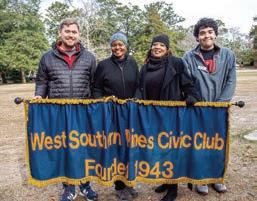
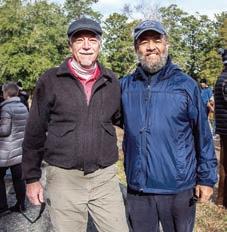
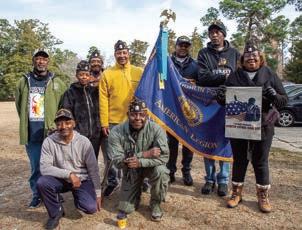

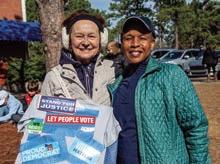
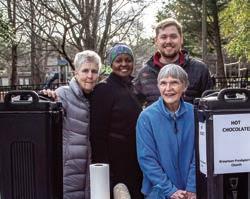

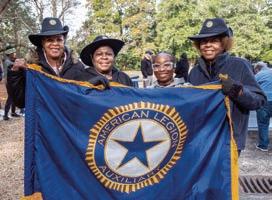
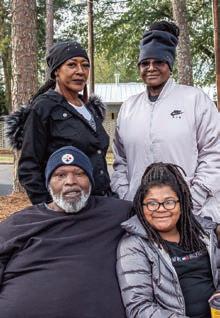
Southern Pines
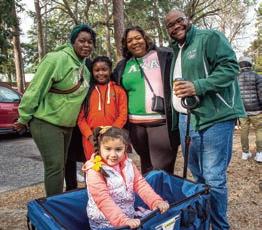
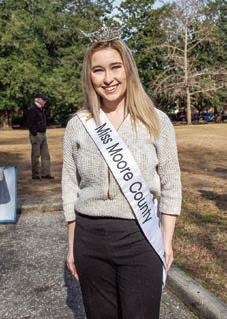
Monday, January 16, 2023
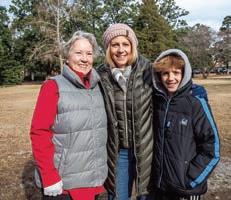























ACROSS
1. apso (dog)
6. Family
9. Attention-getting sound
13. Buenos
14. Bank offering, for short
15. Cook a Benedict egg
16. Expertise
17. Undertake, with “out”
18. Bicker
19. Arctic hunters
21. “So soon?”
23. Caribbean, e.g.
24. “Guilty,” e.g.
25. Frequently, in poems
28. Stuffed bread
30. Look at lovingly
35. March!
37. March!
39. Roof edges
40. Cork’s country
41. Had a bug
43. Takes a chair
44. Change, chemically
46. Joyfulness
47. Present, in class
48. On dry land
50. Mimic
52. Junior, to Mom and Dad
53. Catering coffee containers
55. A period
57. Devoid of moisture, hyph.
61. Highly respects
65. “Move ,” police officer’s order
66. Opposite of high
68. Courtyard
69. Gold panning tool
70. “ is the loneliest number . . .”
71. March!
72. Sacred 73. “ any drop to drink”: Coleridge 74. Relaxes
1. Scottish girl
2. March!
3. Opera highlight
4. Works in retail
5. Not awake
6. Smooch
7. Anger
8. Birth-related
9. Dermatologist’s skin opening
10. “Roots,” e.g.

11. Gulf War missile
12 He and she
15. March!
20. Indian condiment
22. Grassland
24. Spanish rice dishes
25. “La Bohème,” e.g.
26. Food pests
27. Ark contents
29. H.S. math class
31. Prepare potatoes
32. Trailing and climbing greens
33. Old, but new again
34. Ruhr city
36. Art
38. Hold onto
42. Property owner papers
Puzzle answers on page 97 Mart Dickerson lives in Southern Pines and welcomes suggestions from her fellow puzzle masters. She can be reached at martaroonie@gmail.com.
Sudoku: Fill in the grid so every row, every column and every 3x3 box contain the numbers 1-9.


45. March!
49. “To is human . . .”
51. Spin
54. Hose material
56. Aquarium fish
57. Big blowout
58. Assortment
59. Christmas tune
60. A deadly sin
61. Decorative pitcher
62. Historic periods
63. Silent actor
64. Pine tree secretions
67. Lennon’s wife
A chocoholic I am not. On a desserts table with lots of chocolate and other dark delights I can take or leave the chocolate stuff. I leave it for those who would kill their own mother for a bite of anything chocolate. Not me. I don’t even, forgive me friends, like Oreos. No. Never. I must be in the minority everywhere.
A friend told me that once in the ditch of despair during a diet, and dying for chocolate, she had not trusted herself to have even the least bit of chocolate of any kind in her house. Then, in sheer desperation, she climbed high and hunted deep in every corner of every cabinet and finally hidden behind rusted tins of Old Bay and boxes of baking soda, she laid her hands on a long forgotten and now dusty can of pure cocoa. She pried off the lid and dug in, eating every smidge with her bare hand then licking her fingers. That’s desperation. That, my friends, is a chocoholic!
I grew up with good Scottish people who, if it came to the last crumb on the plate, would fight over a caramel layer cake or, even better, a brown sugar pound cake with burnt sugar icing. I’ve seen it happen at church picnics and potluck dinners.
In a show of support for anything other than chocolate I once entered a cupcake contest sponsored by the Chapel Hill Historical Society. First prize, $100. I wanted to see if something, anything, could beat chocolate.
So I spent some weeks developing a lemon cupcake. Not just any old lemon cupcake but an over-the-top and knock-your-senses-to-the-moon lemon cupcake. I mixed. I baked. I tasted. I added. I subtracted. Until I finally ended up with marinating some mango and embedding it in the middle. I made a lemon icing, fluffy and tart, and in a flourish, sprinkled on
shredded coconut. It even looked prize winning.
On the day of judging the downtown historic house had three rooms filled with tables full of cupcakes. Rows, double and triple deep, with cupcakes. Every kind of chocolate. It was chocolate heaven. The air felt heavy with the scent of chocolate, so heavy you could taste it when you breathed in.
I felt very small, greatly outnumbered, and wished I had never in a million years decided to take on the world of chocolate. I was a very small David in a room filled with cocoa Goliaths. Until, out in the front yard, filled with cupcake lovers who paid $10 for as many as they could eat, the judges announced their decisions. Third went, of course, to one of the many, many chocolate cupcakes. No surprise.
I held my breath and hugged the tiny amount of hope I still had left. Second went to . . . Shaggy Lemon Cupcakes with Marinated Mango in the Middle. Mine! I got a fancy, official award certificate and a $25 gift card from a local stationery shop. Later, one of the losers said to me out of the corner of her mouth, “Your title’s what won it.”
I didn’t care. Lemon had placed. Lemon had beaten out chocolate.
The first prize, the big prize winning cupcake — when it was announced and the 13-year-old girl went up to claim her award and get her $100 check — was a plain-Jane vanilla cupcake with plain vanilla icing. After gasping, the applause was wide and astonished. Not only had lemon beaten out chocolate, vanilla had, too. The judges praised the texture of the vanilla cupcake and, of course, the delicate but absolutely perfect flavor of vanilla.
So there you go, chocoholics. You may outnumber those of us of other persuasions, but we still sometimes win a prize or two. Sometimes. PS








